#The Big Cats and their fossil relatives
Text

The Big Cats and their fossil relatives, by Alan Turner, illustrated by Mauricio Antón, 1997
Bought new at the La Brea Tar Pits museum, an excellent book on the history of big cats! I really need to reread this book, though I know it's obviously dated in some areas as new research has come out
#my library#The Big Cats and their fossil relatives#Alan Turner#Mauricio Antón#1997#1990s#big cats#paleontology#big cat book#paleontology book#fossils
10 notes
·
View notes
Text
These are some of my favorite, less well known, non-malacostracan crustaceans!
Mystacocarids
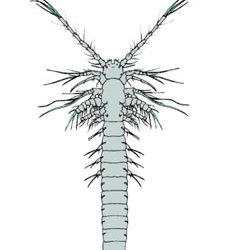
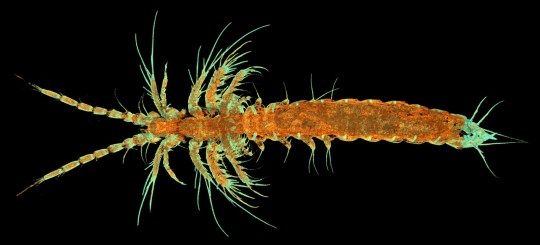
They are usually placed in a group with Ostracods, that is basal to all other extant crustaceans, meaning crabs, barnacles, and bees are all more closely related to each other than they are too Mystacocarids. They live in between grains of sand on beaches in many parts of the world. They get up to 1 millimeter long. I like how they kinda look like feather dusters, or like stretched out lice with too many legs.
Cephalocarids or Horseshoe shrimp
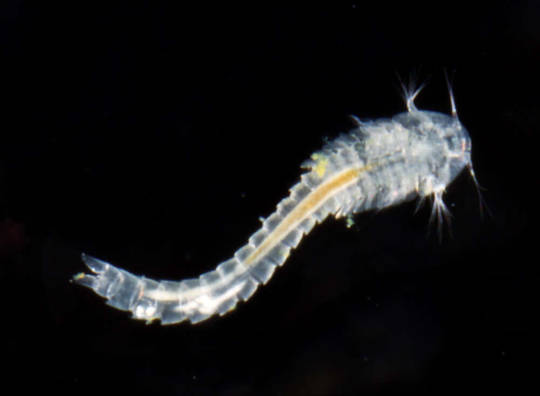
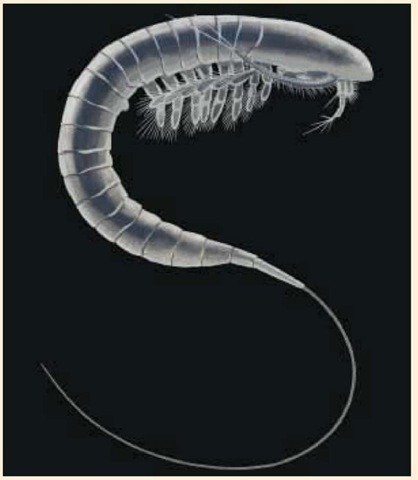
These guys were only discovered in the 1950s century and since then have been grouped with the remipedes, although recently they typically are instead placed in their own group! They are benthic organisms that live in all kinds of sediment from the shore to the deep sea, and typically eat detritus. They are hermaphroditic, have no eyes , and get up to 4 mm long! I think they look a lot like some primitive, Cambrian era arthropods, and despite being small and probably not likely to fossilize, their fossil record extends back to Ordovician, so the appellation of them being "Cambrian survivors" may very well be accurate.
Notostracans or Tadpole Shrimp


Consisting of the genera Triops and Lepidurus, this group of animals is most closely related to water fleas and clam shrimp , and more distantly to fairy shrimp (such as the famous sea monkey brine shrimp). Like brine shrimp, Triops are a common pet. Both genera are known to have populations in temporary pools of water, and have long lasting eggs that can survive desiccation and years without water before hatching again when the water returns. They also can live in shallow lakes, certain wetlands, and other more permanent ponds, and depending on species live in fresh, brackish or even salt lakes, but don't live in marine environments. They are omnivores and will basically eat anything, including smaller members of their own species. For a relatively small group of crustaceans, they have a wide variety of reproductive strategies, with some populations having sexually reproducing males and females, some having exclusively self fertilizing females, others being primarily hermaphroditic, and still others being different mixes of these. This variation is present even in different populations of the same species. They can get up to about 7 cm long , making them much larger than the previously mentioned crustaceans, but not big enough! They are so cute I wish they were big enough I could give them hugs. I think they should be the size of cats .
Remipedes


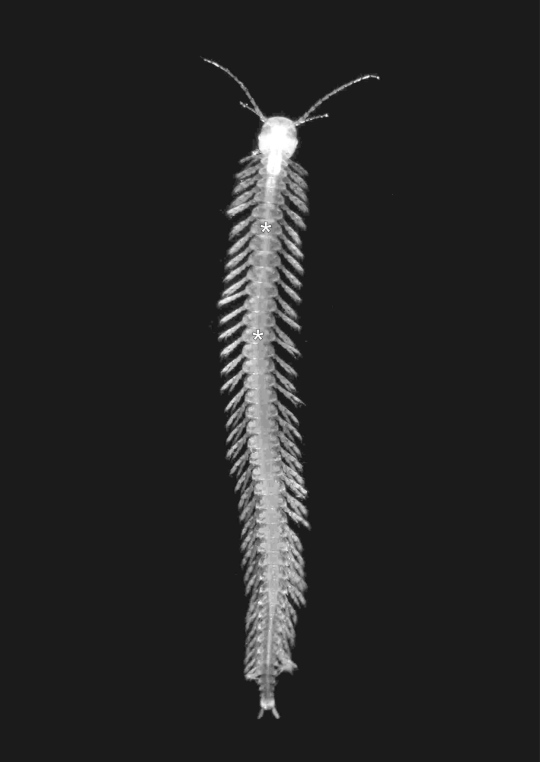
Remipedes are really special, the first living remipedes were only discovered in the late 1970s, and weren't properly described until 1981, meaning our knowledge of living remipedes is only as old as goth music. To be honest their lifestyle is pretty goth too, they exclusively live in caves and aquifers, typically in subtropical , coastal regions. As befitting creatures of the dark, they have no eyes or pigmentation, and instead have an advanced sense of smell. While they are also capable of filter feeding, they have venomous fangs that they use to predate on smaller organisms, and indeed are the only venomous crustaceans (outside of insects). Unlike the predatory adults, remipede larva don't seem to eat at all, and it's speculated that they may instead derive nutrition from symbiotic bacteria. Remipedes have 32 segments, and being hermaphroditic, have female and male openings on different segments of their bodies (7 and 14, respectively) . Despite their seemingly primitive bodies and strange lifestyle, remipedes have actually been discovered to be the group of crustaceans that are closest to the Hexapods, including the insects! They get up 4 cm long but I wish they were as long as eels.
I also kinda wanted to write about clam shrimp here but their phylogeny is a bit of a mess right now and I'm not even sure what qualifies as a clam shrimp anymore. They basically look like little clam shells with a crustacean swimming around in them.
15 notes
·
View notes
Text
Lepom: The Ebotti region
Welcome to the Ebotti region, a calm region south of Mount Ebott and its vast mountain range. This is the region Sans and Papyrus call their home!
The region is filled with lush forests, colorful grasslands and glittering streams of water originating from the mountains. The villages and towns littering the land are full of culture and history and are composed of friendly, close-knit communities. The most well-known towns are Home-Village and New Home City, as the oldest and busiest towns respectively.
Besides their hilarious names, the two towns are quite different: Home is located near the base of the mountain and is a bustling town when celebrations are held, but any other day it's just peaceful and quaint. It's not very big, but its location is connected to the region's history and the people living there know that quite well. It has a path that leads to the side of the mountains, where the caved-in caverns and mine can be found. It also has a museum which explains the history of the region to tourists and kids on school trips. This is where the fossils, crystals and antiques found by explorers of the Ebott caves are displayed.
New Home, on the other hand, is a lot bigger with more utilities and shops and is far more popular with the youth and other newcomers to the area. It's still not a huge high-tech city with flashing lights and neon signs, but it certainly stretches wide, and it does have buildings with more than 3 floors! It has a reputation of having both a large amount and a large variety of markets, like the weekly fresh product markets, the bi-weekly clothing market, the monthly crystal sales, the- uh, yeah, all of them.
All of these products are provided by the neighboring towns and villages, as a way to share all the nice things this area has to offer with visitors and locals alike! This is also one of the few places that actually has a pokémon stadium that’s somewhat well known, as there isn't much of a trainer challenge in the area for those who wish to become strong. Beauty contests are far more beloved here, and people will come from all over for the seasonal and thematic variations! Although you can follow them on TV no problem :)
Finally, moving between towns is relatively safe, if only for the fact that there's always someone willing to lend you a hand on your travels. The main routes don't hold very impressive pokémon, and the pokémon there are pretty used to humans. The nature routes and wild areas are more interesting though: lazy rivers, sandy lake beds and decaying ruins of old buildings are shielded from view by dense broad-leaf forests and the multicolored grasslands and small farms along the path. Locals know how to find them though, and as long as people are respectful they are allowed to visit these places to catch a new friend, do some research, or do some non-intrusive recreation like a small picnic. Beware though, that some pokémon might expect some of that sweet lunch you brought!
Pokémon found in the area:
Since this is a piece about the entire region, I’ll only do a brief overview of what you can expect to see if you move through the area + some honorable mentions. So not a complete list!
(this list is mostly for me to use when I start writing about the region but here it is anyway :3)
Again, the pokémon found in this area seem like common species you’ll find in many regions. If you know where to look you can find some unexpected or ‘more interesting’ ones though!
On farmlands, you may find Wooloo, Tailow, and Mareep,
At night, you may find Drifloon, Pumpkaboo, and maybe Zorua,
In and near towns, you may find common dog, bird or cat pokémon like Yamper, Pidove or Skitty. (the dog and cat pokémon are rarely wild though!)
Some common woodland pokémon are Stantler, Hoothoot, Zigzagoon and Deerling,
Some common meadow pokémon are Vevillion, Cutiefly, Buneary and Cottonee,
Some common waterside pokémon are Wooper, Magicarp, and Mudkip.
Honorable mentions: the Slowbros at the waterside who Sans hangs out with, the Scorbunny and its trainer who Papyrus plays ball games with, and the well hidden Eevee families across the region.
#homemade fanworks#Undertale au#Legendary pokémonsters au#Legendary pokémonsters au lore#lepom au Sans#lepom au Papyrus#lepom au lore#sans au#papyrus au
11 notes
·
View notes
Text
Mike's Media Medley--April 2024
henlo and welcome to my monthly diary review thing where i talk about movies/shows/games i experienced for the first time this month. there are a lot of things i watch/play throughout the year that i really like but don't ever get the opportunity to talk about due to the restrictions of my 7 game/7 movie restrictions on my end of year list + the fact i limit movies to 2024 releases. this list encompasses movies and games from any time period that i watched or played for the first time ever this month.
feel free to reply to this post with things you think i should watch or play!
here are some things i watched and played for the very first time this april:
2024 movie/show releases: Monkey Man, Civil War, Abigail, Fallout
non-2024 movie/show releases: Alien (1979), My Octopus Teacher (2020), The Wonderful Story of Henry Sugar (2023)
games: fallout 3 (2008), the battle of polytopia (2016), let's build a zoo (2021), mineko's night market (2022)
my thoughts on all of them below, in alphabetical order--movies/shows first, then games:
Abigail (2024)

this movie was honestly pretty fun. enjoyed it more than i was expecting tbh, i used my membership tuesday price on this cuz i did not feel like paying full price for a ticket to see this. kind of thought it would be just dumb "ooh evil kid" shock horror
and like. don't get me wrong it is definitely ooh evil kid horror but the twist is given relatively early with only minor padding for a bigger twist later. thought it was decently funny and it works well enough as a singular movie but i don't see it warranting a sequel which the ending might be building up to. and though it was fun everything was like. Fine. directing was fine. acting was fine. music was fine. probably would not see it again but did not hate my decision watch it
60/100
Alien (1979)

YES this is really my first time seeing Alien, i am pretty unfamiliar with basically everything about Alien, nothing i say will probably be new
first off the sound was like. really quiet? and idk if it's because my theater had the volume too low or if that's the way it was mixed--it is an old movie after all--but i couldn't hear a lot of the dialogue and i feel like it would've boosted my enjoyment of the movie a lil more but i did really like it
specifically the art direction and set design. the alien planet and the ship, the fossilized skeleton on that big chair all with this really distinct weird black mechanical look that is also like. weirdly alive. and how that extends to the nostromo having parts of it as the movie progresses that looks like the alien. biomechanical is i think the word for it? its awesome. epic, even. makes u paranoid
big fan of the directing as well. very claustrophobic at some scenes. the refusal to show you the alien in full for a while. reaction shots instead of direct sight of the gore and horror (the cat when the janitor dies, ripley hearing parker and lambert die as she runs)
the thing that detracts from the movie for me is the sexual violence undertones. just simply not a fan
p good, might need to rewatch with subtitles to appreciate a bit more once i understand the actual plot lmfao. also this movie is very sweaty just like love lies bleeding. maybe i like sweaty movies. 80/100
(more under the cut)
Civil War (2024)
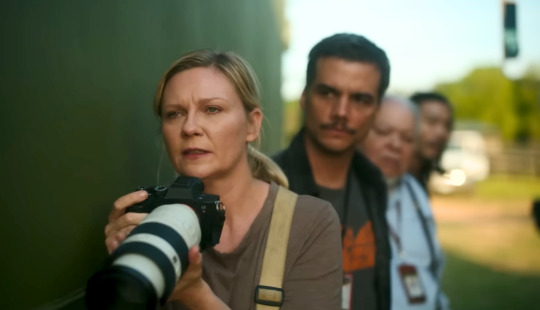
this movie was not very good
i was not going to see it and then i heard that it was less a typical war movie from the perspective and soldiers and shit that it was more about war correspondence and that piqued my interest as someone who used to want to be a journalist. turns out it's not even that much about war correspondence either. the main characters are war photographers but it all feels like. pretty surface level?
not to mention i understand the intent of keeping the politics of a theoretical civil war part 2 vague so as to not actually incite any specific kind of rage or controversy from either side but like. its a civil war movie. about war correspondence and photography.
the emotional hook of the movie just does nawt work for me. the young photographer lady is incredibly dumb. why does she do the things she does. why does she jump between the cars like that when she's so obsessed with the main lady. i had other gripes with her but i dont even remember all of them because this movie is already a distant memory. the bonding between them does nothing for me and just feels really forced and corny.
that being said there are some nice shots in this movie. it's well-directed but the sound design is really fucking carrying. all of the gunshots are LOUD and impactful and i think that really helps with the conflict where the wishy washy centrist politics fail.
30/100. not the worst movie ive ever seen but i would not watch it again.
Fallout (2024)
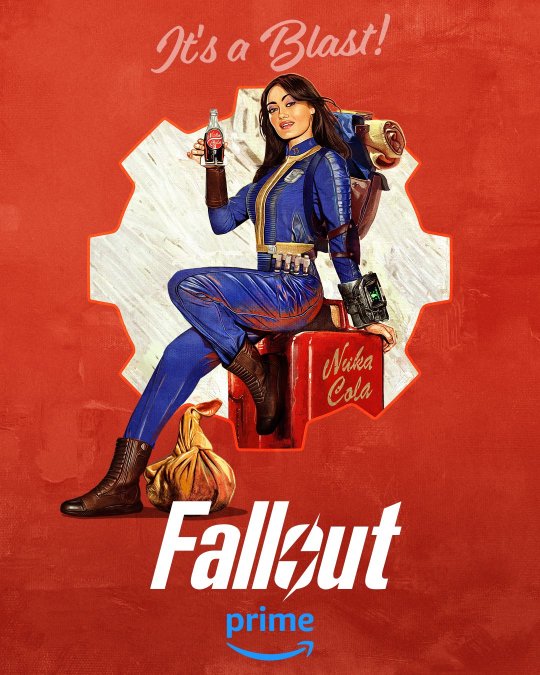
yeah yeah the show is really good. acting is good all across the board. was fun seeing the fun references / easter eggs to fallout. i was particularly interested in norm's side of the plot and lucy was a really refreshing protagonist. i think maximus was the weakest of the main plotlines but i'm hoping they go somewhere with his darker side because while i think it was the weakest i think he has the most potential
like lucy and the ghoul are pretty squarely set on their own sides with their own clear morals (or karma, good and evil) but maximus is someone who wants to be a good person but is often just. not good at being a good person. he's naive and not very competent at his job tbh but is still being heralded as a new wave of the brotherhood of steel. very interested to see where all that goes.
enjoyed it a ton. 85/100
Monkey Man (2024)
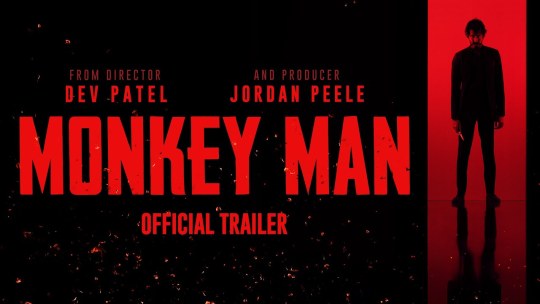
dev patel really made a movie about the healing power of trans people and he's awesome for that
good action flick with some scathing political commentary that i wish i was more well-versed on indian politics to say something substantial about but i could Feel the contempt for modi/the bjp and hindu nationalism as a whole
it's shot & edited sooooooo frenetically and i think this works a lot of the time HOWEVER at some points it is like. an active detriment. i never really feel nauseous when movies use shaky cam but this movie's camera is not just shaking. that shit is rocking. vibrating. particularly when he's outrunning the police thats when it gets Bad
otherwise i really enjoyed it. the action hits. the aesthetics and cinematography are probably my favorite of everything i watched this month! that being said i probably wouldn't watch it again just because i'm not the type to rewatch action movies like these i think ive only ever seen john wick the one time
75/100
My Octopus Teacher (2020)
it was fine. it's a documentary idk i don't have much to say. doesn't really feel right rating it but i watched it and the visuals were breathtaking but like it doesnt rly have a plot or anything. its neat. nice background thing to put on while you do something else
The Wonderful Story of Henry Sugar (2023)
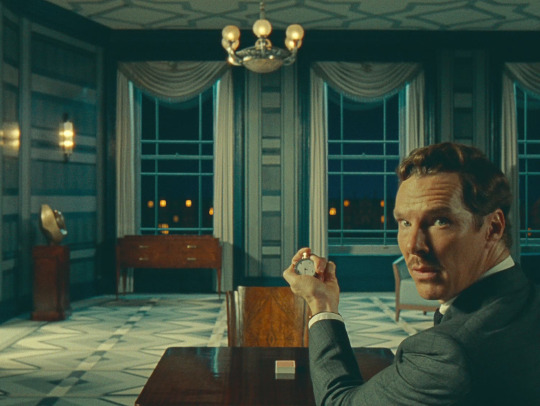
yeah yeah. unique color palette and color grading. directed well to suit the framing device. everyone and everything is smartly positioned onscreen.pretty good performances from people who have to just dump like 60 lines of dialogue on you all at once. yall know this one is good its wes anderson go watch it its 40 minutes long
75/100
video games:
The Battle of Polytopia (2016)/Let's Build a Zoo (2021)
putting both of these games here because i really don't have a lot to say about them, i played them both very briefly. in let's build a zoo's case, literally for five minutes. the battle of polytopia was boring and after like two runs i was like ok welp that's it for me. i did play the mobile version so that might be part of the problem but idk i don't think the gameplay loop would've grabbed me even if expanded. let's build a zoo had atrocious UI and controls on console and i immediately got pissed off trying to build an enclosure and uninstalled
Fallout 3 (2008)

i am not immune to propaganda
is this game good? not really but my favorite elder scrolls game is oblivion so you should know i, for one, love bethesda jank. love walking around in a big ass world full of weird people and discovering places and just taking a look around. frankly i don't care if i died five times to the same pack of super mutants. i'm having a good time.
not super deep into the main story and have only completed about ten quests but i'm into it
Mineko's Night Market (2022)
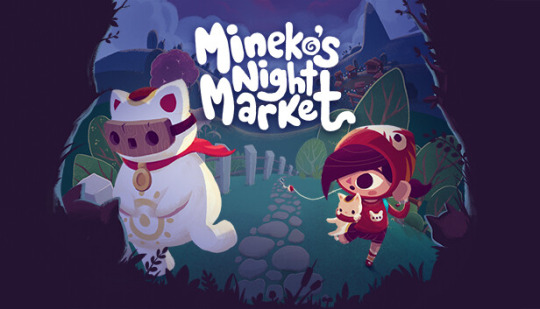
man i like. really wanted to like this game. it has a really cute art style and a good sense of humor, and i like management and sim games. unfortunately it just failed to grab me. i had a chuckle or two for the first hour i played but after that i was just really bored running around looking for flowers and i quit before i even got to attend the actual night market. i played it through my dad's gamepass and i usually end up quitting games quickly due to buying them on steam and needing to decide if i like them or not under 2 hours. otherwise i try not to quit games that early unless they're super boring or glitchy/unplayable. unfortunately even without that time limit looming over my head it just wasn't really doing anything for me.
if u got this far into reading this i love u
4 notes
·
View notes
Text
Hey guys! I was bored and decided to draw some brazilian little babies! Enjoy💕💕

There'll be a bit of info about 'em under the cut! (And also the folklore behind the Boto!)
CUTIA - agouti are tiny rodents that can be found in most of North, Central and South America; Here in Brazil there's 9 different types of these little guys and i've been fortunate enough to cross ways with 'em, since they're everywhere xD
BOTO-COR-DE-ROSA - amazon river dolphin is famous for it's appearance in brazilian folklore. It says that during the night, they take the form of a very handsome man and seduce girls to spend the night with him. By the morning, he's gone and the girls are left pregnant with it's child. People say that this story was created because girls wouldn't admit they slept with someone before marriage lmao.
GRALHA AZUL - azure jay is the animal symbol of the state of Paraná. They are very important to our ecosystem, as they're responsible for spreading pinhão (pinion? Pine nut? Idk) seeds. Unfortunately, their population is declining and with it, the araucaria forests, which provides their main food.
ARARAJUBA - golden conure is a medium parrot native to the Amazon forest. Their colors are bright and resemble the brazilian flag.
SOLDADINHO-DO-ARARIPE - araripe manakin is a small endangered little guy. It's red cap gave it the name that, from portuguese to english, translates to "little soldier of araripe". It is from Ceará and some other states in the north-eastern region.
ARARA MILITAR - military macaw gets its name from it's green feathers. It's native to Mexico and the South America, and considered a vulnerable species. Apparently its not actually brazilian but i didn't know at the time i drew it xD.
MICO-LEÃO-DOURADO - golden marmoset is endemic to the brazilian atlantic coastal forest. Unfortunately, they're endangered due to loss of habitat, poaching and the illegal pet market.
GATO MARACAJÁ - margay is a small and nocturnal cat. They spend most of the time in trees and are able to turn their ankles 180° degrees, managing to grasp branches extremelly well.
JACARÉ-ANÃO - dwarf caiman is found in most of the north region of South America. It is the smallest of all crocodilians (and my favorite).
PIRARUCU - arapaima is one of the largest freshwater fish and can be found in the Amazon River. They where introduced to East Asia and are now a invasive species- welp, they're a delicacy anyways soooo (never tasted them, but people say they're good).
CACHORRO-DO-MATO - bush dogs have a big range of living but are rarely seen. Their species was, funnily enough, found first as fossils and then as the living thing - people thought they were extinc lol. Their closes living relatives are the Maned Wolf and the African Wild Dog.
4 notes
·
View notes
Text
ARGONUS FAUNA: beast of sonias
(NOTE: descriptions copy-pasted from DA where i normally/originally post my works. any context that is missing here on tumblr can be found on my DA [linked here and on pinned post] )
[additional note: much of the first several post on argous's fauna use a human to scale instead of an E-class aircraft like i would end up doing later on. thus, animal's actual size relative to their world will be smaller. a bonus note to make is that this human perspective also includes names of the animals, so i'll be giving out alternate names and/or some explanation....]

so now we head over to the asia of argonus, aka sonias.
not unlike our asia, and also like other parts of the world, sonias has some interesting and unique fauna. not surprisingly (especially with these guys i drew), most of these weird wonders come from the jungles where diversity is at it's fullest. actually, alongside arid biomes, tropical climates are a hotspot for some of the "living fossils" of argonus...for some reason...
pantheronager
-5ft at hips
-dichobunoid ungulate
-rainforest of KO laos (kingdom of laos)
looking like the hybrid between a deer, horse and cat, pantheronagers are neither those three and are instead a "cat-sized" dichobunoid, an ancient group of ungulates more closer to whales and hippos. the surviving dichobunoids that exist in the sonian tropics aren't too different from their ancient relatives in terms of looks and behaviors, and the panteronager is no exception
typical of it's relatives, they're fleet-footed browsers that feed mostly on the foliage and fallen fruit within the forest floor. males are solitary most of the time (excluding mating season), while the females live in small groups of 2-4 with one of them being the alpha. however, unlike other species of surviving dichobunoid, they (alongside the other members of it's genus) have horns and tusks, two pairs each in true argonian fashion. both males and female have them; males use them to fight other males over territory and mates, females use them similarly to establish the pecking order, and both also use them a protection if cornered. every season, males will find a harem and mate with all the females, then leave once the fawns are born.
the panthonagars have been kept in captivity for quite a while. they're rather infamous in the pet trade, due to their high reproductive rates (females can have 2-3 fawns every 3 months) and rather surprising adaptability. this has lead them to become introduced into other tropical climates in cities and towns, though their saving grace from becoming completely destructive are the equally abundant introduced/adaptive predators , especially the stunnits and avibels aeronoids.
olmraptor
-8ft tall
-dromaeosaurid
-forests of center kingdom.
there are lots of "living fossils" with dinosaurs being no exception. this is probably because the kpg extinction event wasn't exactly like our own. instead of one big asteroid killing off the dinosaurs, a mixture of volcanic activity and a tiny dash of climate change had the Mesozoic reptiles start to fizzle out in the beginning of the Paleocene, leaving behind only the lucky ones that were adaptable enough to survive the changes. one of these lucky archosaurs to make it to the modern Holocene were the dromaeosaurids, more specifically the "Asiatic" members of velociraptorinae. such is the case with the olmraptor, a forest-dwelling descendant of those velociraptors.
the olmraptor, like all other non-avian/pterosaur archosaurs, have a line of spikes going down their backs. they're solitary hunters, preferring to catch small prey like rodents, invertebrates, lizards and birds. although diurnal, they're most active during the brighter hours of dusk and dawn. the male and female mate for life and, despite their solitary lifestyle, have their territories overlapping each other. every year, the male's coat becomes brightly colored, and they begin to start their collection of flowers and bones. when the male first starts this display, the collection starts in a small, shallow pile of grass and twigs. if he's lucky and manages to successfully gain the love of a female, they'll make that display pile into a nest and he'll use it every year to renew their love. both parent incubate the eggs, with the female doing most of the incubating as the male either gathers food or defends the female. when the babies hatch, they're almost fully developed and are able to start walking within their first hour of their life. once able to walk, both parents and offspring leave the nest where the babies are taught how to survive on their own. next season, they'll come back to that nest to start the process all over again.
like the pantheronager, they're kept as pets and are infamous for their high reproduction and adaptability. however, they are at least a little helpful in hunting and eating unwanted pest. olmraptors in the western hemisphere (especially amerigia) are popular in places like parks, country clubs and gated communities for their colors and pest control.
onisuchus
-49ft long
-crocodilian, converging onto kaprosuchus
-tropical wetlands of indus
sometimes what seems to be a living fossil is actually just an animal converging onto a similar build to prehistoric animal. modern crocodilians are sometimes considered living fossils, given how alot of them haven't changed in the 100 millions of years being here. in some funny twist, most of the seemingly "mesozoic survivors" crocodilians aren't really that and are instead just a case of convergent evolution, such as the case with the onisuchus.
the onisuchus is a massive carnivore who's claim to fame is it's kaprosuchus-like looks and it's voracious appetite. they'll eat practically any animal they see fit for a meal, dead or alive. they're just as good swimmers as they are runner, and can run in short burst of speed to catch prey. they even have a body count; about 150 people per year, mostly humans and smaller elkinets, have their lives taken by this gluttonous archosaur. however, not everything is doom and gloom for the onisuchus; like all other surviving crocodilians they're great mothers that protect their young and move them away from danger (mostly other onisuchus). at least 2/3rds of all onisuchus-related deaths are due to people being unaware of a mother onisuchus's presence, or even the babies since they hang around dense foliage to further be protected. when the mother spots the threat, she'll not only kill the animal (or person), but also will ensure that the carcass wont attract other predators by eating their dead body. still, even with all these protective measures, lost of predator's still manage to steal her babies, and only 3 out of 10 of her babies will make it to adulthood.
striped tapir
-13ft tall
-tapiridae
-tropics of southern sonias
one of the very rare instances of an argonian species replacing an earth's species entirely, the striped tapir (aka baku to many humans) was though to be some kind of extreme argonian variation of the Malayan tapir, when in fact they're a completely different species that replaces the Malayan tapir entirely. like alot of perissodactyls, they have a semi-long tail, with the long hair making up a third of it's length. and, like most other tapir species on argonus, they also have tiny, little tusks on their mouths.
the behavior is not too different from other tapir species. they're mostly solitary, eats leaves and shoots, most active at night, and can be considerably dangerous when cornered (though the prefer to run first).
if the tapir's ears look a bit weird, that's because i accidentally gave it two ears instead of four and didn't notice until i was typing this. so, i used mspaint as a makeshift photoshop and it surprisingly worked.
also, fun fact, the male olmraptor's colors are based off of the mononykus reconstruction from the weird & wild creature cards.
#mythology#tapir#ungulate#dichobunoid#dromaeosauridae#xenobiology#convergent evolution#speculative evolution#velociraptorinae#speculative biology#kaprosuchus#speculative zoology#argonus#planet argonus
4 notes
·
View notes
Text
Tenipuri Complete Character Profile - Choutarou Ootori
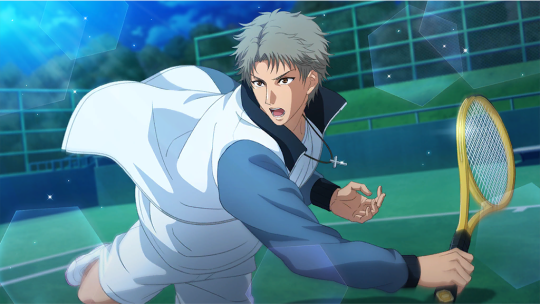
[PROFILE]
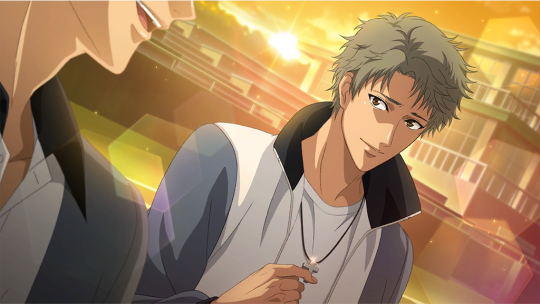
Birthday: February 14th (Aquarius)
Blood Type: O
Relatives: Grandmother, Father, Mother, Older Sister, Cat (Fortunata)
Father’s Occupation: Attorney
Elementary School: Hyotei Academy Primary School
Middle School: Hyotei Academy Junior High School
Grade & Class: Second Year | Class 2-C | Seat 9
Club: Tennis Club (Regular, future vice captain)
Committee: Cultural Activities Committee
Strong Subjects: Art, Music
Weak Subjects: Experiments with living creatures
Frequently Visited Spot at School: Music room, staff room
Favorite Motto: “One for all, All for one.”
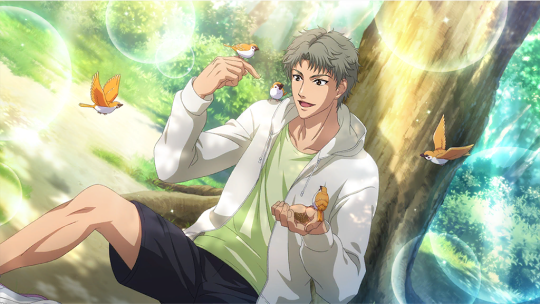
Daily Routines: Vocal exercises, feeding the birds in the garden
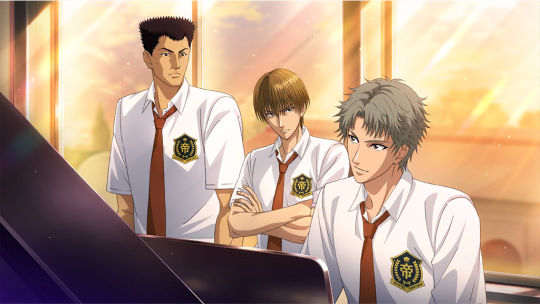
Hobbies: Playing the piano, playing the violin, browsing 100-yen shops [23.5]
Favorite Color: Off-White
Favorite Music: Classical (Chopin)
Favorite Movie: The Lord of the Rings
Favorite Book: A collection of Kaii Higashiyama’s paintings ➜ Long-running shoujo manga [TP]
Favorite Food: (Real) shishamo, beef casserole
Favorite Anniversary: The day he joined the tennis club
Preferred Type: A girl who won’t cheat on him ➜ A girl who won’t cheat on him no matter what [TP]
Ideal Date Spot: Wherever his date wants to go
His Gift for a Special Person: “I will do my best for you!”
Where He Wants to Travel: A beautiful beach
Thing He Wants Most Right Now: World peace ➜ Strength to protect what’s important to him [23.5]
Dislikes: Discussing about romance, ruins [TP]
Skills Outside of Tennis: Perfect pitch, creating practice menus [TP], giving massages [TP]
Spends Allowance On: Musical scores
Routine During the World Cup: Helping out the hotel staff
[DATA]
Height: 185cm ➜ 187cm [23.5]
Weight: 72kg ➜ 73kg [23.5]
Shoe Size: 27.5cm
Dominant Arm: Right
Vision: 0.8 Left | 1.0 Right
Play Style: Serve & Volleyer
Signature Moves: Scud Serve, Neo Scud Serve
First Serve Success Rate: 78%
Favorite Brands:
Racquet: BRIDGESTONE (PROBEAM X01 OVER)
Shoes: BRIDGESTONE(ARCH POWER X CS BTSC21)
Overall Rating: Speed: 3 / Power: 4 / Stamina: 3 / Mental: 2 / Technique: 3 / Total: 15
Kurobe Memo: “I guess I would say he has a big body but is faint of heart. He is the type of player that typically needs to work on his mental strength. Not to the point of arrogance but he needs to learn to stand up for himself. Otherwise, his opponents may underestimate him.” [RB]
[POSSESSIONS]
What’s in His Bag:
Tuning fork
Sketchbook
Watercolor pencils
A stick of mint gum // Shishido gave it to him but he hasn’t eaten it since he actually doesn’t like mint
Senbei
A fossil
What’s in His Locker [C&S]:
Deodorant sheets
Hair dryer // An ION dryer that Shishido used when his hair was long. Now the rest of the club members use it after showering
His pendant
4 notes
·
View notes
Text
Doraemon Movie Review: Nobita's New Dinosaur (2020)
What is Doraemon? The title character of the Doraemon manga and anime is a blue robotic cat from the 22nd Century who keeps an array of high-tech gadgets in a portable pocket dimension on his belly, and has traveled from the future to improve the fortunes of a hapless schoolboy named Nobita. Although relatively obscure in the English-speaking world, Doraemon is a Mickey-Mouse-level cultural icon in East Asia (and some other regions, too). The Doraemon franchise was a big part of my childhood, and there are still elements of it that I enjoy now.
Doraemon has released theatrical films almost annually since 1980, most of which involve Nobita and his friends (kind Shizuka, brash Gian, and crafty Suneo) getting swept into adventures thanks to Doraemon's gadgets. Despite being of potentially broad appeal to fans of science fiction and animated films, there are very few English reviews of the Doraemon movies, so I'm embarking on a project to write about all the films that have come out so far. Good luck to me…

Movie premise: Nobita revives a fossilized double-yolked egg that hatches into two feathered dinosaurs.
My spoiler-free take: A good Doraemon movie that manages to differentiate itself from other Mesozoic-themed stories in the franchise while taking inspiration from recent scientific advances.
POTENTIAL SPOILERS AFTER THIS POINT
Review: I’ve already shared a few brief thoughts about this movie and discussed some of the scientific references therein. At risk of repeating myself too much, I was generally impressed by the amount of up-to-date paleontological research it incorporates and even builds important plot points around. No, the portrayal of bird evolution in this movie is not particularly accurate to our current understanding, but like I’ve said before, I appreciated that the dinosaurian origin of birds was a primary theme here, and it’s certainly an appropriate angle for a 2020 movie about dinosaurs to tackle. As mainstream movies go, Nobita’s New Dinosaur stands out in how much respect it pays to its scientific inspirations.
As for the story itself, I was originally apprehensive about how this film would be able to distinguish itself from Nobita’s Dinosaur. However, though the beginning plays out in a similar way (probably intentionally so), I felt that the second half of this movie carves out its own niche quite nicely. If anything, the climax here has more parallels with Nobita and the Knights on Dinosaurs in how it involves the end-Cretaceous mass extinction and reveals that there’s no true villain in the story. In a way, I think Nobita's New Dinosaur combines the narrative strengths of those two previous Mesozoic-themed tales. Nobita raising two dinosaurs is a more engaging setup than Suneo running around under the impression that he’s hallucinating in Nobita and the Knights on Dinosaurs, whereas the protagonists’ actions turning out to have a major impact on the history of life on Earth gives the plot slightly more depth and complexity than the straightforward “boy and his pet” story of Nobita’s Dinosaur.
If I have any (non-scientific) criticism for this movie, it may be the cameo from Piisuke, the plesiosaur from Nobita’s Dinosaur. Although touching and well-intended, Piisuke’s appearance raises some confusing questions about continuity. Some parts of this movie (such as Nobita’s friends lacking faith in the possibility that he could find living dinosaurs) imply that it takes place in a separate continuity from Nobita’s Dinosaur, but Piisuke showing up, complete with Nobita getting a flashback to their time together, seems to run counter to this premise. The fact that Nobita never fully realizes that Piisuke is there (as Piisuke rescues him while he is drowning and departs before he regains consciousness) might also be disappointing.
Star rating: ★★★★☆
7 notes
·
View notes
Text
Tuseday 7/9/21 - The Dinosaur Scavenger Debate

Model of Sue the T.rex eating a baby Edmontosaurus, from the Field Museum, Blue Rhino Studios
Full disclosure before I start this article, I am not a palaeontologist, neither have I kept up with all of the relevant literature to know everything on the topic. But I've seen this debate flair up a few times on paleo twitter in the past, so I'm gonna give you a very shallow overview of the discussion.
Therapod dinosaurs were a very unique type of carnivorous animal. All the active hunting terrestrial carnivores we have today have an upper size limit of maybe a tiger or a bear, and most of those travel on all fours. Large meat eating dinosaurs had different bone structures, metabolisms, and importantly, different prey.
A few times in the past, and again recently, there have been those sceptical of the actual hunting ability of large therapod dinosaurs. Sure they were big enough to kill their prey, but were they fast enough? Had enough stamina? Tyrannosaurus rex had jaws powerful enough to break clean through flesh and bone, but you know what else does? Hyenas, jackals, vultures; scavengers. I am not personally aligned with this hunter-sceptical side of palaeontology, but it is an argument that exists.

Hyenas scavenging, Credit: The Next Crossing
Long ago there was an ill-informed take that some dinosaurs were too big to walk. Now the current take is that some dinosaurs were too big to hunt. So, with a bit of research, today I'm going to explore both sides of this debate.
Obligate Scavengers
The first part of the argument is usually about how powerful the jaws of Tyrannosaurus are. Its bite could crush bones, and coprolites (fossil poo) from the species has shown remains of bone fragments, confirming that this dinosaur was indeed eating bones. The teeth of dinosaurs more commonly thought of as pursuit predators such as raptors have narrower, blade like teeth, while T.rex had large, thick, banana sized/shaped teeth. So was this dinosaur specialised for mostly rotted carcasses?
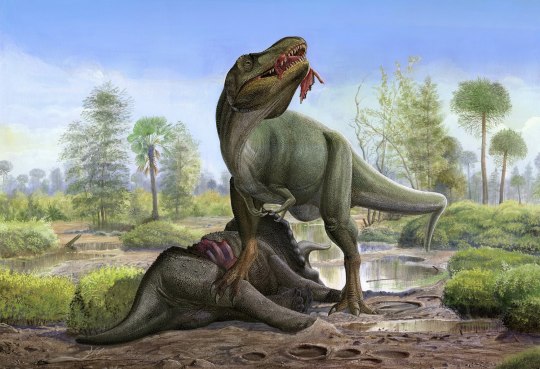
Tyrannosaurus eating a Triceratops, Atrox1 (deviantart)
Tyrannosaurus has also been recently found to have extraordinary senses. It's eyesight is second to none in the dinosaur kingdom and may even rival the visual acuity of today's falcons. And it's sense of smell was amazing too, able to smell blood way beyond even it's visual range. Senses like these are useful for scavengers today who need to travel long distances to find their food. Vultures and condors may travel thousands of kilometres to find a carcass, and like T.rex, their large size means that they can scare off most smaller scavengers from a larger corpse.
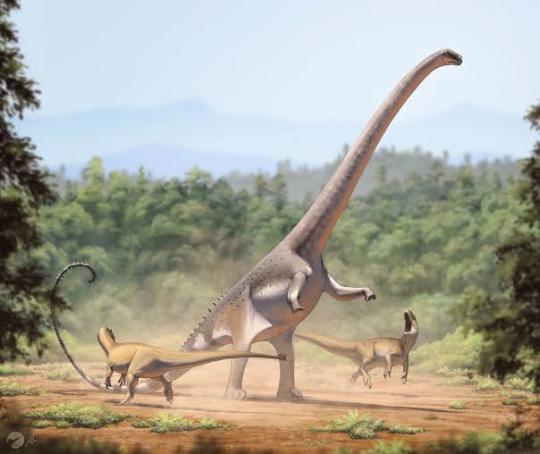
Allosaurus fragilis attack a Diplodocus, Fred Weirum
This last point is more about Allosaurus, who has recently been accused of a scavenging lifestyle too. Although Allosaurus was more lightly built than Tyrannosaurus, and had large powerful claws, it has long been studied to most often preyed on Sauropod dinosaurs, which were many, many times larger than Allosaurus. Allosaurus was thought to be unlikely to be able to take down a Sauropod on its own, and its skull is not as robust as most large therapods its size. Sauropod dinosaurs were truly gigantic, and have been studied to move in herds, so perhaps it was just that Allosaurus followed these herds, and when one died, that's enough meat to sustain even a family of Allosaurus for weeks!
Active Hunters
While it's easy to find fossil evidence of bones being damaged while the animal is dead, evidence of the animal being hunted is not as easy. BUT it can be found. Many prey species dinosaurs have evidence of bone scar tissue, meaning that the animal was injured, but got better. In some specimens, there are specific markings evident of teeth marks on partially healed bones, or even teeth lodged in the bones. Tyrannosaurus rex teeth markings have been found in multiple specimens, showing that Tyrannosaurus was actively attacking live animals, and sometimes, the prey got away.

Tyrannosaurus, Mark Garlick
The unusually well adapted senses also point to a predator positive position. Tyrannosaurus' binocular vision is evidence of an animal that needed depth perception, and the only extant animals with true binocular vision are predators. Bone studies have, for a long time, concluded that Tyrannosaurus rex could only walk relatively slowly. But this is a misconception, Tyrannosaurs preferred to walk slowly, and may have travelled most of the time at a more relaxed pace, but it could likely experience short bursts of higher speed. The herbivorous prey items it hunted were not extraordinarily fast either, and a quick dash as an ambush was probably all it took to grab a surprised hadrosaur or ceratopsian.
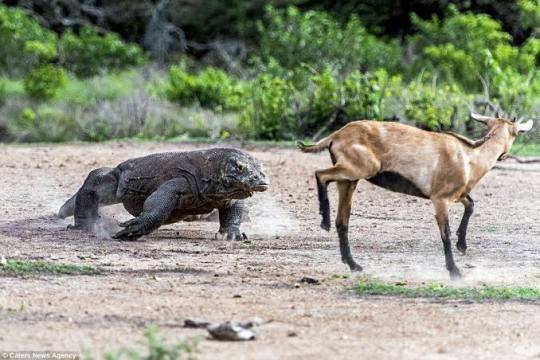
Komodo Dragon hunting a feral goat, Caters News Agency
The hardy teeth of Tyrannosaurus rex may have been well suited for crushing bones, but their overall shape point to damages that could also better injure their prey. Unlike the pointed daggers of most therapods, Tyrannosaurus teeth were deeply serated like a Komodo Dragon's. And Komodo Dragons do not need to kill their prey in one bite either. Their serated teeth are home to bacteria, and once they bite into their prey, the wound festers and bleeds out profusely, until their injury worsens enough that the predator catches up and finishes them off. Palaeontologists have theorised T.rex may have done the same.
Opportunistic Scavengers
The issue with this debate is there seems to be this misconception that it's either one or the other. But what if we consider modern examples of meat eating animals? Sure Hyenas, a well established scavenger can crush bones with its jaws, but you know what else can? Lions, and Tigers, and Bears! Oh my! Crushing bones can help you kill living animals too actually.
And sure Tyrannosaurus rex has shown evidence of scavenging on the carcasses of long dead animals, and Allosaurus has been discussed reaping the benefits of a massive Sauropod carcass, but what predator wouldn't pass up on an already dead animal corpse? Big cats, bears, and wolves have been observed countless times reaping the benefits of animals killed by humans, or massive sea mammals or fish that wash up dead on the beach.
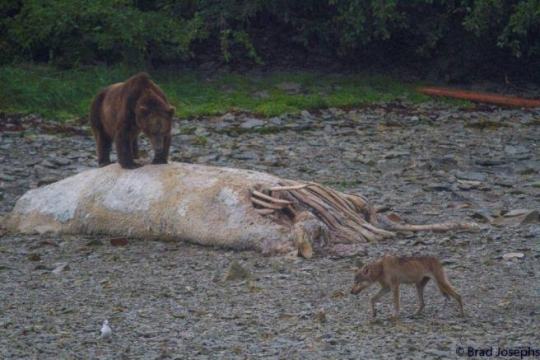
A brown bear and a wolf scavenging on a fin whale carcass, Credit: Brad Josephs
The probable truth of the dinosaur scavenger debate is that most large therapods were capable of taking down some prey items, but would not pass up a large dead dinosaur if the opportunity presented itself. Because much like the corpse of a whale at the bottom of the ocean, a dead dinosaur could sustain a small ecosystem of its own for a while.
Thanks for Reading
This was a very long blogpost, so if you read all the way through it, I much appreciate you taking the time. The topic of predatory dinosaur behaviours is ever evolving as new tests and evidence are presented. The consensus on Tyrannosaurus is currently leaning more toward predator than scavenger, but this study on Allosaurus is still fresh, and despite much of the paleo community opposing this take, evidence against it hasn't been well compiled yet.
If you have any further information you want to present on this topic, I am more than happy to hear it in the Notes, or via inbox. If you know other Palaeontology based topics that you think would be interesting to cover, my inbox and asks are always open.
You can find more articles like this linked in my pinned post.
Credits/Further Reading:
Was Tyrannosaurus rex a Ferocious Predator or a Wimp? (Wilkin & Hone); Frontiers for Young Minds
Allosaurus was not a Carnivorous Predator but a Scavenger during Late Jurassic, Study Finds (Jefferson); The Science Times
Time to slay the T.rex Scavenger Debate (Brian Switek); National Geographic
Tyrannosaurus rex was not a Fast Runner, more a Slow Walker, Simulation shows (David Bressen) Forbes
T.rex: A Hunter AND a Scavenger; The Prehistoric Saga
The Truth About T Rex - Predator or Scavenger; Dangerville - Youtube
#blog#blogpost#palaeontology#dinosaurs#tyrannosaurus#tyrannosaurus rex#allosaurus#allosaurus fragilis#tyrannosaurus scavenger#allosaurus scavenger#dinosaur scavenger
77 notes
·
View notes
Text
An ecologically sensitive Greek island is at the center of a battle over who gets to decide where wind farms are sited.
On the edge of the Aegean Sea lies Antikythera, a bone-dry, windswept rock of 8.5 square miles (22 square kilometers) and 22 inhabitants. Despite appearances, this unforgiving land holds immense ecological importance.
A NATURA-protected area, it is a migration hot spot for birds, with more than 200 species from Africa reposing there each spring and fall before heading north and south respectively; it is home to the world’s largest colony of Eleonora’s falcon; it is the westernmost site in the world where the isabelline wheatear breeds; it is one of the very few places in the central Mediterranean where 28 different species plus four to five subspecies of birds of prey, occur during both migration periods, with some of them, like the marsh harrier and the honey buzzard, seen in the thousands.
The Hellenic Ornithological Society (HOS), a conservation non-governmental organization, has been doing the recording and tagging these birds since Greece lacks a government agency for the protection of birds. In November 2020, HOS and other environmental organizations lodged an appeal to the Greek Council of State to overturn an August 2020 decision of the Ministry of Environment and Energy, which doubled the installed power capacity a wind farm may have without having the obligation to conduct an environmental impact assessment study. The reason? An anemometer, which was installed on the island of Antikythera in the summer of 2020 to collect data for a possible wind farm.
While renewables absolutely have a role to play in protecting the climate and creatures like those on Antikythera and elsewhere, the struggle shows the challenge of where to site wind and solar farms. The local impacts could end up doing harm to the rare species that call Antikythera home.
By 2030, the European Union aspires to produce 32% of its total energy from renewable energy sources. By the same year, member-state Greece must hit a national target of harnessing 7,000 megawatts from wind power. “This can be done without intervening in high-sensitivity areas like Antikythera,” said Apostolis Kaltsis, a biologist and conservation program coordinator at HOS. Research published earlier this year found that Greece already generates 4,000 megawatts of wind power, and that the non-NATURA sites that have been selected to be outfitted with wind turbines across the country could produce four to six times more than the remaining 3,000 megawatts mandated.
“When you have this data, it is nonsensical if not downright malpractice, to install a wind turbine in one of Greece’s three major bird migration spots,” Kaltsis said.
But there are more than conservation dynamics at play. The EU has a powerful wind energy lobby in the form of turbine manufacturers. An early June 2021 article that appeared in the print version of Greek energy trade publication Energy Press said that manufacturers have been bidding against each other to secure Greek mountains and islands for future wind turbine installation.
“For some mountains, two different wind companies have submitted applications for future wind turbine setups; our mountains and islands are not enough to cover the mounting interest,” the publication wrote.
In a different article, the same outlet mentioned that several big manufacturers and wind farm operators from the EU and around the world are preparing to act when Greek legislation relaxes, not naming the players, but pointing to Norway’s Equinor, Denmark’s Copenhagen Offshore Partners, Germany’s E.ON’s subsidiary Innogy, and U.S.’s Principle Power. Meanwhile, the Greek government reportedly plans to use 58% of the approximately $38.2 billion it will receive from the EU Recovery Fund—the $896 billion stimulus package the European Commission launched as a response to covid-19—on funding green and digital transformation projects, including the infrastructure needed for wind farms.
Though it might take a good two years for any manufacturing company to jump through the licensing hoops of the Greek government, Kaltsis said ornithologists must act fast. “In this way, nobody will tell us we didn’t warn them in advance,” he continued.
The island is a special protection area, meaning it was selected by the ecological network of NATURA and its birds directive to protect one or more rare, threatened, or vulnerable bird species or specific regularly occurring migratory species. A report the HOS published in March 2020 found that erecting wind turbines will have detrimental consequences for Antikythera’s biodiversity. Among the impacts, the group found that fatigued birds reaching the island after having crossed the Mediterranean could be killed by the wind turbines or avoid the island altogether and eventually die from exhaustion further out to sea; protected species could have less of a chance of mating success due to loss of critical nesting sites; and that other endemic and endangered species such Lepidoptera, flamboyant Greek butterflies and moths, could be harmed by the scale of industrial activity. Even large wildlife such as bears and wolves might be forced to relocate, according to the report.

“We are helping the company save time and money as installing a wind turbine in an area where incredible populations of vultures pass will most probably be rejected (it is against the EU proper siting guidance after all),” Kaltsis adamantly stated.
The activism of HOS and the other environmental organizations that joined the November 2020 appeal has already borne fruit: “The Ministry recently handed down a decree which forbids companies to slice large wind farms into several smaller [ones] in order to bypass proper environmental licensing,” said Kaltsis. “This is a step in the right direction, but the road is long until we persuade the Greek government to see us as important stakeholders and not some sort of trivial special interest group.”
An estimated 140,000 to 500,000 bird deaths occur per year due to turbine collisions. “This is low compared to the impacts of buildings, bridges, and cats,” said Peter Fiekowsky, founder and chairman emeritus at the Foundation for Climate Restoration, a nonprofit that’s mission is to catalyze action to restore the climate by 2050. Other human activities like agriculture as well as climate change have contributed to the precipitous decline in bird populations. (So have fossil fuels, which have killed more wildlife than clean energy.)
As a technologist, he said he prefers to assess projects such wind farms on a pros and cons basis: should the number of birds killed be small relative to other causes of death, then objectively it is not significant; should the wind farm threaten a species with extinction, then there’s reason for pause and reevaluation. “In the grand scheme of life, a wind turbine is normally a very minor intrusion—unless the bird population affected might be led to extinction,” Fiekowsky concluded.
Brian Helmuth, professor of marine and environmental sciences at Northeastern University, agreed there are always trade-offs when installing renewable energy at scale. He is the HOS’s activism, though, is not without merit. “Staying away from sensitive areas where turbines can cause damage through bird strikes is certainly step one to creating clean energy solutions smartly, while addressing competing concerns and needs,” he said. “There are other factors such as the height of the turbine, the lighting used, and even the color of the blades, which can reduce impacts.”
For an islet somewhat forgotten by humans, Antikythera plays a strategic role not only in the preservation of birds, but in understanding the planet as a whole. Situated “at the crossroads of air masses from all continents,” according to Vassilis Amiridis, climate scientist and director of research at the National Observatory of Athens, it is where dust from different places converges. This can tell us a great many things about dust transport processes, extreme weather, and, most of all, climate change. Since 2017, climate scientists from the Panhellenic Geophysical observatory of Antikythera (Pangea), a research infrastructure of the National Observatory of Athens (NOA), have been installing high-tech lidar systems, photometers, solar polarimeters, and other instruments on the island, with the aim of turning it into a global climate supersite. Manolis Plionis, research director at NOA and president of the board of directors, is fiercely opposed to the installation of a wind turbine on Antikythera. Such a turn of events would be detrimental not only to the rare species of birds that frequent the island, but apparently to the global fight against climate change.

“The wind turbine will alter Pangea’s tremendously important atmospheric and greenhouse gas measurements (among many others), or create non-representative measurements,” Plionis said. Pangea has already received funding of about $25 million from the EU and is collaborating with NASA and the European Space Agency. The group has also been inviting elite international climate science and research talent to experiment on-site.
“A wind turbine could lead to the cancelation of this huge project,” said Plionis. “Pangea is at stake.”
The fight over Antikythera is one that could play out not just on other parts of the Greek coast, but on coastlines around the world. An ocean away, 14 miles (22.5 kilometers) off the coast of Massachusetts, the Biden administration approved the Vineyard Wind project in May. The 84 turbines expected to be built for the mega-project will generate enough electricity to power 400,000 homes in New England. It’s part of Biden’s plan to expand U.S. offshore wind capacity from just 42 megawatts today to 30 gigawatts by 2030.
Not everyone embraced Vineyard Wind warmly, though. The fishing industry protested that the wind farm will dramatically impact fish stocks and vessel traffic, but was reportedly “met with silence” by government officials. A similar fight is playing out in Maine where angry lobstermen and women have hounded a company planning a pilot floating wind turbine project in recent months.
“It’s been a longstanding tradition in the U.S. to have special interest groups push back against industry through litigation, which has the additional downside of creating polarized camps, and creates the false impression that the needs of nature are pitted against those of business and the economy,” said Helmuth. Yet, he added, this creates the huge risk of missing other key considerations, like the fact that the dirtiest industries are usually located in communities of color and economically disadvantaged neighborhoods. Solutions might exist, though, that could let offshore wind and ecologically sensitive areas and industries each win.
A great case study, Helmuth suggested, where all of the considerations were taken into account was the Block Island Wind Farm in Rhode Island, the U.S.’s first commercial offshore wind farm. Here, the local Sea Grant program ran a so-called special area management plan, through which they consulted with diverse stakeholders in a transparent way.
“It was a long process, but in the end, everyone’s concerns were heard and the project was able to move forward,” said Helmuth.
The key is to adopt a holistic, systems-thinking approach. The Block Island project could serve as a template for mediating the differences between industry and environmentalists early on in the planning process, said Helmuth. Note the magic word: “early.” Rising seas and more extreme weather are looming, and we are losing the privilege of time to reduce the emissions causing them. At the same time, nature is also facing mounting pressure. Addressing the causes of climate change without factoring in stress on the natural world could mean clean energy solutions end up creating new problems, to say nothing of the impact on people’s livelihoods. That means we might need to master the art of walking multiple fine lines at once.
“We have to recognize that whatever choices we make will have consequences,” said Helmuth. “At the same time, we have to learn to listen to the people who try to protect healthy ecosystems without classifying them in our minds as special interest groups.”
#animals#nature#environment#conservation#climate change#wildlife#endangered species#science#wind energy#renewable energy#wind farm#offshore wind#greece#EU#birds#wind turbine#renewable energy management#habitat destruction#electricity
6 notes
·
View notes
Text
Titanis walleri
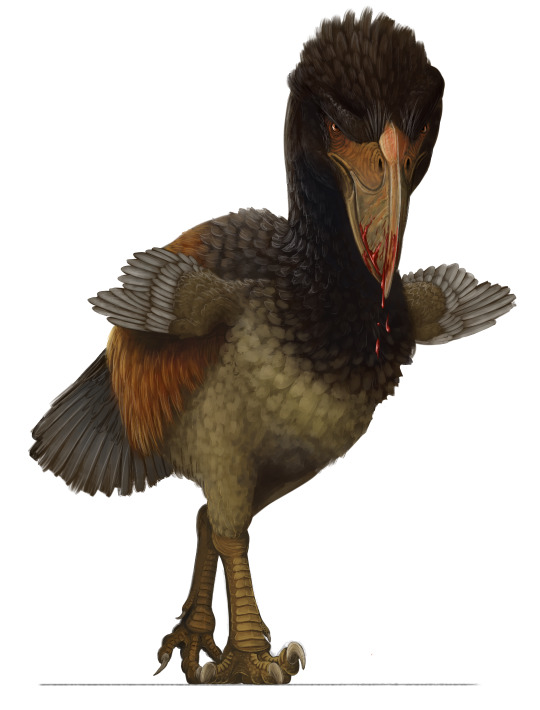
By Scott Reid
Etymology: Titan
First Described By: Brodkorb, 1963
Classification: Dinosauromorpha, Dinosauriformes, Dracohors, Dinosauria, Saurischia, Eusaurischia, Theropoda, Neotheropoda, Averostra, Tetanurae, Orionides, Avetheropoda, Coelurosauria, Tyrannoraptora, Maniraptoromorpha, Maniraptoriformes, Maniraptora, Pennaraptora, Paraves, Eumaniraptora, Averaptora, Avialae, Euavialae, Avebrevicauda, Pygostaylia, Ornithothoraces, Euornithes, Ornithuromorpha, Ornithurae, Neornithes, Neognathae, Neoaves, Inopinaves, Telluraves, Australaves, Cariamiformes, Phorusrhacoidea, Phorusrhacidae, Phorusrhacinae
Status: Extinct
Time and Place: Between 5 and 1.8 million years ago, from the Zanclean to the Gelasian ages of the Pliocene through Pleistocene


Titanis is known from the Santa Fe River and Nueces River Formations of Florida and Texas

Physical Description: Titanis was a Terror Bird, one of the largest known Terror Birds, a group of large flightless predatory birds that terrorized the Americas during the Cenozoic Era, right up until humans would have appeared on the scene. Titanis is one of the latest members of this group, and the one that made the journey up to North America - most Terror Birds are from South America. It would have been 2.5 meters tall - much taller than a person - and would have weighed 150 kilograms. There was a lot of variance in size and height, however, indicating that Titanis may have had at least some sexual dimorphism. It had a short tail and round body, with long and powerful legs. In fact, it also had very robust toes - and one of the strongest middle toes known for a Terror Bird. It had very small, useless wings, that were very much locked in against the body - they didn’t have a lot of folding power compared to other birds. This indicates the wings really were… useless. They didn’t use them for raptor prey restraint or anything else, making them distinctly different from the Dromaeosaurids of long past. Titanis had a very thick neck, which would have supported a large head with a very impressive and terrifying hooked bill - complete with extensive crunching power!

By Dmitry Bogdanov, CC BY-SA 3.0
Diet: As a Terror Bird, Titanis primarily ate large mammals - and some medium and small sized mammals, of course, but basically it was able to cronch anything around it.
Behavior: Terror Birds are most closely related to modern Seriemas, and so a lot of their behavior has been guessed based on Seriemas today. As such - and given that it didn’t have much in the way of wings - Titanis probably mainly relied on its feet in kicking its prey to death. It would chase its food down, kick it, and potentially pin it down. Then, final death blows would have been delivered with the powerful cronch of its beak, though of course the hook on the beak would have allowed increased tearing and shredding. While modern Seriemas are solitary, it is possible that Titanis and other Terror Birds may have used groups to take down larger prey, though they probably would have been more groups of convenience than formal packs. It is possible they had similar breeding habits to living Seriemas, but even that is a question - their larger size, different niche, and general different time periods would provide large differences. And we don’t even know the actual breeding habits of Seriemas very well! So, that being said, Titanis would have probably been fairly territorial over their nests, and both parents were probably involved in the care of the nest and then the young, even after fledging. The young would follow the parents around until reaching maturity. As such, it’s possible that the parents may have hunted for the young, and brought food back for them until they were old enough to hunt for themselves. Then, upon leaving the parents, they probably would have been fairly solitary until finding a mate of their own.
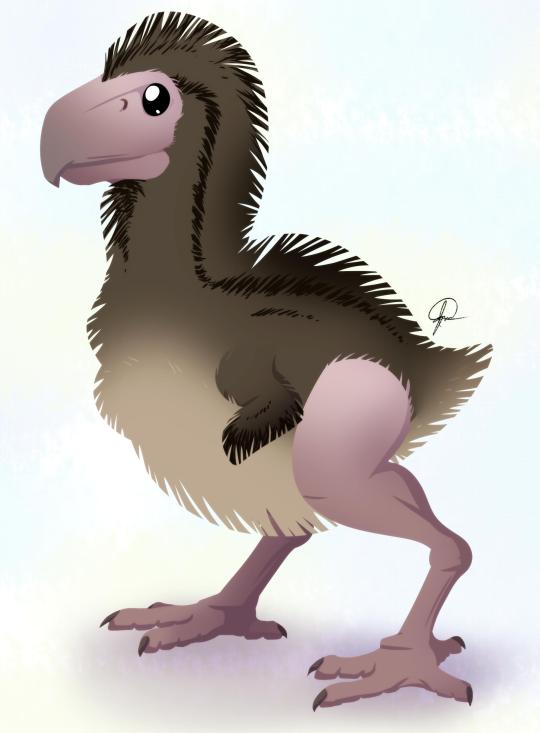
By José Carlos Cortés
Ecosystem: Titanis primarily lived in open grassland habitats in the southern parts of the United States, clearly extending from Texas through to Florida and probably found all over that range. It stuck to warmer, probably wetter habitats, though the exact environments it lived in aren’t very well studied in terms of general flora. Fauna, however, is well known. Titanis lived alongside a wide variety of other animals - in Citrus County, it was found with a variety of frogs, turtles, lizards, rabbits, horses, shrews, bears, dogs, mustelids, and cats (including Smilodon), armadillos, sloths, the Mastodon, cows, peccaries, camels, and deer. There were, of course, many dinosaurs as well - in addition to Titanis, there were waders (indicating a non-insignificant amount of water in this ecosystem, possible coastline, swamps, or lakes), vultures, pheasants, ducks, falcons, owls, pigeons (including the passenger pigeon), woodpeckers, blackbirds, corvids, sparrows, finches, flycatchers, cardinals, rails, grebes, herons, bitterns, and buzzards. Basically, a fairly typical array of North American birds! In Gilchrist County, Titanis also lived alongside similar creatures, including Smilodon, though without the Mastodon - though there was Rhynchotherium! Unfortunately, its Texan relatives aren’t well known, though it stands to reason that it would have been similar to other locations.

By Ripley Cook
Other: Titanis is one of the largest known Terror Birds, and one of the largest known ones discovered early in our understanding of Terror Birds. In fact, we knew about Titanis so early on that there are a lot of old depictions of it - including ones where it has… hands. Clawed hands. That is very much wrong and cringy, but hey, there are pictures of it! Titanis is also fascinating because of its place in Earth’s History - it is one of the (only?) known Terror Birds from North America. This occurred due to the Great American Interchange, a sort of mini-columbian exchange where North America and South America combined, leading to the mixing of animals from both continents together. The traditional narrative says that Terror Birds went extinct because sabre-toothed cats came in from North America, but this is flawed for three very big reasons: 1) there were already Sabre Toothed animals filling that niche in South America, they were just Marsupials; 2) Terror Birds stuck around for a long time after the Interchange, and 3) Terror Birds reached North America in return! So Titanis helps to showcase that Terror Birds were doing just fine during this ecological exchange. So why did it - and other Terror Birds - go extinct? Probably the Ice Age, though for now, we can’t be sure. Regardless, they went extinct… probably before people got there. There are fossils that might be Titanis from 15,000 years ago, which would indicate they were still there when people got there. Which is terrifying. And also might point to humans being the cause of their extinction. Still, that seems unlikely, and they were definitely on the decline before then - so the Ice Age seems like the most logical explanation.
~ By Meig Dickson
Sources Under the Cut
Alroy, John, Ph.D. Synonymies and reidentifications of North American fossil mammals, 2002. John P. Hunter, Ohio State University, Mammalian Paleontology.
Alvarenga, H. M. F.; Höfling, E. (2003). "Systematic revision of the Phorusrhacidae (Aves: Ralliformes)". Papéis Avulsos de Zoologia. 43 (4): 55–91.
Alvarenga, H.; Jones, W.; Rinderknecht, A. (May 2010). "The youngest record of phorusrhacid birds (Aves, Phorusrhacidae) from the late Pleistocene of Uruguay". Neues Jahrbuch für Geologie und Paläontologie, Abhandlungen. 256 (2): 229–234.
Baskin, J. A. (1995). "The giant flightless bird Titanis walleri (Aves: Phorusrhacidae) from the Pleistocene coastal plain of South Texas". Journal of Vertebrate Paleontology. 15 (4): 842–844.
Bertelli, S., L. M. Chiappe, and C. Tambussi. 2007. A new phorusrhacid (Aves: Cariamae) from the Middle Miocene of Patagonia, Argentina. Journal of Vertebrate Paleontology 27(2):409-419.
Brodkorb, P. (1963). "A giant flightless bird from the Pleistocene of Florida". Auk. 80 (2): 111–115.
Carroll, R. L. 1988. Vertebrate Paleontology and Evolution 1-698
Chandler, R.M. (1994). "The wing of Titanis walleri (Aves: Phorusrhacidae) from the Late Blancan of Florida". Bulletin of the Florida Museum of Natural History, Biological Sciences. 36: 175–180.
Cracraft, Joel, A review of the Bathornithidae (Aves, Gruiformes), with remarks on the relationships of the suborder Cariamae. American Museum Novitates ; no. 2326.
De Iuliis, G., and C. Cartelle. 1999. A new giant megatheriine ground sloth (Mammalia: Xenarthra: Megatheriidae) from the late Blancan to early Irvingtonian of Florida. Zoological Journal of the Linnean Society 127:495-515
Degrange, Federico J.; Tambussi, Claudia P.; Moreno, Karen; Witmer, Lawrence M.; Wroe, Stephen; Turvey, Samuel T. (18 August 2010). "Mechanical Analysis of Feeding Behavior in the Extinct "Terror Bird" Andalgalornis steulleti (Gruiformes: Phorusrhacidae)". PLoS ONE. 5 (8): e11856.
Ehret, D. J., and J. R. Bourque. 2011. An extinct map turtle Graptemys (Testudines, Emydidae) from the Late Pleistocene of Florida. Journal of Vertebrate Paleontology 31(3):575-587
Emslie, S. D. 1998. Avian community, climate, and sea-level changes in the Plio-Pleistocene of the Florida Peninsula. Ornithological Monographs (50)1-113
Emslie, S. D., and N. J. Czaplewski. 1999. Two new fossil eagles from the late Pliocene (late Blancan) of Florida and Arizona and their biogeographic implications. Smithsonian Contributions to Paleobiology 89:185-198.
Franz, R., and I. R. Quitmyer. 2005. A fossil and zooarchaeological history of the gopher tortoise (Gopherus polyphemus) in the Southeastern United States. Bull. Fla. Mus. Nat. History 45(4):179-199.
Gibbons, J. W., and M. E. Dorcas. 2004. North American Watersnakes: A Natural History. 1-438.
Gould, G.C. & Quitmyer, I.R. (2005). "Titanis walleri: bones of contention". Bulletin of the Florida Museum of Natural History. 45: 201–229.
Hulbert, R. C. 1995. Equus from Leisey Shell Pit 1A and other Irvingtonian localities from Florida. Bulletin of the Florida Museum of Natural History 37(17):553-602.
Hulbert, R. C. 2010. A new early Pleistocene tapir (Mammalia: Perissodactyla) from Florida, with a review of Blancan tapirs from around the state. Bulletin of the Florida Museum of Natural History 49(3):67-126.
MacFadden, Bruce J.; Labs-Hochstein, Joann; Hulbert, Richard C.; Baskin, Jon A. (2007). "Revised age of the late Neogene terror bird (Titanis) in North America during the Great American Interchange". Geology. 35 (2): 123–126.
Marsh, O. C. (1875). "On the Odontornithes, or birds with teeth". American Journal of Science. 10 (12): 403–408.
Mayr, G. 2009. Paleogene Fossil Birds. Springer-Verlag Berlin Heidelberg.
Mayr, G. 2017. Avian Evolution: The Fossil Record of Birds and its Paleobiological Significance. Topics in Paleobiology, Wiley Blackwell. West Sussex.
McDonald, H. G. 1995. Gravigrade xenarthrans from the early Pleistocene Leisey Shell Pit 1A, Hillsborough County, Florida. Bulletin of the Florida Museum of Natural History 37(11).
Meachen, J. A. 2005. A new species of Hemiauchenia (Artiodactyla, Camelidae) from the late Blancan of Florida. Bulletin of the Florida Museum of Natural History 45(4):435-447.
Meylan, P. 2001. Late Pliocene anurans from Inglis 1A, Citrus County, Florida. Bulletin of the Florida Museum of Natural History 45(4):171-178.
McFadden, B.; Labs-Hochstein, J.; Hulbert, Jr., R. C.; Baskin, J. A. (2006). "Refined age of the late Neogene terror bird (Titanis) from Florida and Texas using rare earth elements". Journal of Vertebrate Paleontology. 26 (3): 92A (Supplement).
Morgan, G. S., and R. B. Ridgway. 1987. Late Pliocene (late Blancan) vertebrates from the St. Petersburg Times site, Pinellas County, Florida, with a brief review of Florida Blancan faunas. Papers in Florida Paleontology 1:1-22.
Morgan, G. S. 1991. Neotropical Chiroptera from the Pliocene and Pleistocene of Florida. In T. A. Griffiths, D. Klingener, (eds.), Bulletin of the American Museum of Natural History 206:176-213.
Morgan, G. S., and R. C. Hulbert. 1995. Overview of the geology and vertebrate biochronology of the Leisey Shell Pit Local Fauna, Hillsborough County, Florida. Bulletin of the Florida Museum of Natural History 37(1).
Morgan, G. S., and J. A. White. 1995. Small mammals (Insectivora, Lagomorpha, and Rodentia) from the early Pleistocene (early Irvingtonian) Leisey Shell Pit Local Fauna, Hillsborough County, Florida. Bulletin of the Florida Museum of Natural History 37(13).
Robertson, J. S. 1976. Latest Pliocene mammals from Haile XV A, Alachua County, Florida. Bulletin of the Florida State Museum 20(3):1-186.
Ruez, D. R. 2001. Early Irvingtonian (latest Pliocene) rodents from Inglis 1C, Citrus County, Florida. Journal of Vertebrate Paleontology 21(1):153-171.
Tambussi, Claudia P.; de Mendoza, Ricardo; Degrange, Federico J.; Picasso, Mariana B.; Evans, Alistair Robert (25 May 2012). "Flexibility along the Neck of the Neogene Terror Bird Andalgalornis steulleti (Aves Phorusrhacidae)". PLoS ONE. 7 (5): e37701.
Tedford, R. H., X. Wang, and B. E. Taylor. 2009. Phylogenetic Systematics of the North American Fossil Caninae (Carnivora: Canidae). Bulletin of the American Museum of Natural History 325:1-218.
Webb, S. D. 1974. Chronology of Florida Pleistocene mammals. In S. D. Webb (ed.), Pleistocene Mammals of Florida 5-31.
Webb, S. D., and K. T. Wilkins. 1984. Historical Biogeography of Florida Pleistocene Mammals. In H. H. Genoways and M. R. Dawson (eds.), Carnegie Museum of Natural History Special Publication 8:370-383.
White, J. A. 1991. A new Sylvilagus (Mammalia: Lagomorpha) from the Blancan (Pliocene) and Irvingtonian (Pleistocene) of Florida. Journal of Vertebrate Paleontology 11(2):243-246.
#Titanis walleri#Titanis#Bird#Terror Bird#Dinosaur#Dinosaurs#Raptor#Bird of Prey#Birds#Palaeoblr#Birblr#Factfile#Australavian#Cariamiform#Theropod Thursday#North America#Neogene#Quaternary#Carnivore#paleontology#prehistory#prehistoric life#biology#a dinosaur a day#a-dinosaur-a-day#dinosaur of the day#dinosaur-of-the-day#science#nature
471 notes
·
View notes
Text
Hayloft - Part 2
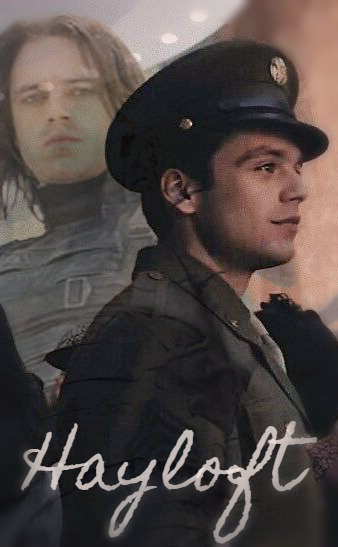
Series Masterlist - Bucky Masterlist - Full Masterlist
Summary: A young girl finds a soldier hiding in the hayloft on her father’s farm. Intrigued, she visits him more and more until her father finds out and puts him to work. As they grow closer, something else grows too.
Pairing: James Buchanan “Bucky” Barnes x OC Jenny Richelle “Ricky” Hill
Warning: Strong language, inaccurate war description
Author’s note: Based on the song Hayloft by Mother Mother and the lovestory of my grandparents. I am Dutch and the war was a bit different here, so I will be basing this on the stories I’ve heard about my grandparents.
Word count: 2433

‘What are you reading Jenny?‘
‘What’s it to you James?‘
‘Just curious, that’s all.‘ He watches as a smile starts tugging on the corners of her lips. She tries to surppres it, but the sparkle in her eyes is clear as day.
‘Of sons and lovers,‘ she hums, showing him the front, ‘do you know it?‘
‘Heard of it, haven’t had the chance to read it,‘ he answers, ‘will you read it to me?‘
From that moment on, she’d read to him every Friday and Sunday. Sometimes on Wednesdays if he’d look at her nicely. Though Jenny’s father would rather have her spend time with other lads who are a little more wealthy, he didn’t mind for the time being. After all, the two seemed to be great friends.
Meanwhile, Jenny was falling hard and fast. She hadn’t known this feeling before. The butterflies in her stomach when he’d wink at her, the racing of her heart when he’d touch her skin, the way she got light headed when he’d tease her. She could deal with Michelle, the pictures, and the fear of being caught if she knew she could come home to James.
The pictures on the cork board at her work kept changing. Eventually, Timothy’s picture disappeared as he lived a town over and couldn’t possibly still be here. James and Johnny’s pictures were moved up to make them more prominent, but with their messy stubble, weathered faces, and much longer locks they were barely recognizable from them.
Jenny continuously send secret letters to James and Johnny’s relatives and friends under her own name. When anyone asked about it, she just said she was catching up with pen pals.
Then one day a strange letter arrived. Jenny hadn’t seen the handwriting before. As usual, she gathered the men in the living room to read them their letters and burn them right after. They weren’t allowed to keep them in fear they would be found if they were searched.
And so she got to the strange letter. It read.
“Dear Jenny,
Thank you for your wonderful letter. I am grateful to hear you are safe and sound. It has been a while. Please say hi to him for me and tell me that I miss him. Tell him I’m not angry anymore and I understand why he left us when he did. There’s no shame in it, I just wish I could visit to see his face again.
Tell him I got into the army. It’s not the position I wanted, but I get to represent my country. Please don’t laugh at me when you see my face.
I hope to hear from you soon,
Yours sincerely,
Steve Rogers“
‘Who is Steve Rogers,‘ Jenny asks James, but when she looks up from the letter she can see the tears in his eyes. ‘Are you okay James?‘
‘He’s my best friend,‘ James sniffles with a smile, ‘I used to be better at everything, but now he’s finally outdone me.‘ He looks proud and nostalgic as he swallows his tears away. ‘You know, I haven’t heard people call me James in such a long time because he always used to call me Bucky.‘
‘That’s a nice nickname,‘ Jenny smiles and takes a seat next to him on the couch while the others leave, having thrown their letters in the fire. She hands James his. He laughs when he reads it again.
‘He probably spend hours on this,‘ he chuckles, ‘he never knew how to use his words. I always had to help him find friends or a date. Last time I saw him we went to a fair and I was supposed to leave for the war the next day. He wanted to fight so bad, but he’s build like a toothpick and there’s no way they’re letting someone like that in.‘ Jenny hands him a piece of paper.
‘I wrote down the return address for you, might you ever want to write him again,‘ she tells him. James looks at her in disbelieve.
‘You are a goddamn angel,‘ he smiles and throws his arms around her, engulfing her in a tight hug, ‘you are the best thing that could’ve happened to me.‘ She laughs and pushes him off a little.
‘You’re crushing me,‘ she chuckles when he lets go of her. Alpine wanders into the living room and jumps onto James’ lap. Jenny scratches her behind her ear with a smile while James admired her. ‘I like Bucky. It’s a nice nickname. Fits you way better than James.‘
‘How come?‘
‘James is way too smooth,‘ she eyebrows knit together a little while she tries to explain it, ‘it’s what most of those soldiers walking around town look like. Bucky is a bit more rugged and strong. It’s a handsome name.‘ He watches her face change to a bit of mischief.
‘You’re going to be the death of me,‘ he chuckles.
‘I thought I was an angel,‘ she bats her eyes innocently, pressing a quick kiss to his cheek. ‘Don’t forget to burn that letter. I’m going to help mother out with dinner.‘ And she’s gone while James feels his cheeks heat up. Alpine looks up at him with a judgmental look.
‘Don’t say it, I know,‘ he sighs, talking to the cat, ‘this isn’t going to end well.‘
‘Good morning gents,‘ Jenny chirps, opening the door to the shed to bring their breakfast, ‘I got some jam for you today.‘ Johnny almost jumps out of his bed.
‘Good morning Jenny, how does it feel to be old,‘ he teases her, poking at her side.
‘Ah, stop it,‘ she laughs at the tickling, ‘I’m not old. Call James old!‘
‘I’m 23, not a fossil,‘ he chuckles in a rough morning voice.
‘Is it your birthday,‘ Timothy asks, peeking from under his covers.
‘Yeah, I’m 22 today,‘ she smiles, pushing Johnny’s face away, ‘so my father bought jam from the neighbors and my mom is making a cake.‘
‘Cake,‘ James asks in disbelieve. It had been ages since he had eaten cake. Most people don’t have money to acquire the ingredients.
‘Don’t expect too much from it,‘ she smiles, ‘it’s just custard and rusk.‘
‘Honestly, that’s better than I expected,‘ he smiles, ‘I’ve heard people make fig cakes these days.‘
‘Oh, I’ve heard of those,‘ Johnny laughs, ‘heard they’re hard enough to bash someone’s head in.‘ James watches Jenny’s smile a she talks to Johnny before her shift. She looks so good in her navy, knee-length skirt; navy, fitted waistcoat; and ivory blouse. As for today she’s holding a jacket in the same navy color over her arm. The nights had become colder and longer. Winter is coming and they all know it. The shed will be a lot colder in the following months.
‘I’ll be back earlier today, I only have a half shift,‘ Jenny tells them with a smile, ‘enjoy the jam.‘
‘Thank you.‘
Though the days might be colder as winter approaches, the work has gotten harder. It’s harvest time and the boys are busy beyond compare. They work until they’re covered in sweat and only stop when misses Hill comes outside to give them water. The two younger boys in the family help them with some smaller tasks while Penny, the other daughter, sits by the tree behind the farmhouse and knits.
Around twelve, misses Hill comes outside with lunch and sets it down by Penny. They boys sit in a circle with her while she continues to knit. James watches what she’s doing and notices the small mountain of knitted materials next to her.
‘Say Penny, what are you making?‘ She looks up from her work.
‘Oh, mother told me to knit some sweaters because the weather is getting colder,‘ she tells him, ‘mother normally does it, but she’s busy sewing jackets.‘
‘Sewing jackets?‘
‘Yeah, you don’t think we’re going to let you guys freeze to death do you,‘ she grins and hands him one of the sweaters to show him, ‘you should be happy Jenny has a job. She’s terrible at knitting and sewing.‘ James takes a look at the sweater. They’re just simple, white sweaters. Probably made from the wool of the sheep that stand in the stables.
‘We’re going to dye them once they’re done so you all have your own,‘ she hums, continuing with her work.
‘How wil you dye them? Isn’t that terribly expensive these days,‘ Timothy asks her a bit concerned.
‘It’s fine. We’re going to use wild berries and some other things like coffee grounds,‘ she explains to him, ‘we’re not exactly short on money, but it’s good to be creative in these times.‘
‘How’d you guys end up hiding stowaways,‘ James ask, taking a big bite out of his sandwich.
‘Well, Johnny was here with Jenny when we heard soldiers were going to check every house for young gents who didn’t join the army,‘ she says, giving Johnny a small smile, ‘so we made him hide in the crawl space under the house until things calmed down, but it turns out they weren’t going to check us because we need the help on the farm so the men that were here would be safe. Besides, they already took our brother away.‘ She doesn’t look far as sad as Jenny does when talking about him.
‘So who wants what color? I’ll be able to make brown, blue, and red.‘
‘I’d like brown,‘ Timothy mumbles.
‘I’ll take blue,‘ Johnny grins.
‘I guess that leaves red for me,‘ James smiles at her, eating the last few bites of his sandwich before getting up again. ‘Let’s get back to work.‘ Johnny sighs loudly.
‘No fun that one,‘ he jokes to Penny. They hear something on the gravel and Wesley and Nathan jump up. The group sees Jenny stepping off her bike and putting it against the fence like she does every day.
James looks at her like the world just got a little brighter. The sunshine in his life returned and seems to just look at him.
‘Ah, did I miss lunch,‘ she laughs as her brothers pull her towards the group, ‘I’m sorry I wasn’t here earlier.‘ She presses a kiss to everyone’s cheek, but stops for a second after kissing James’ cheek and smiles. She starts rubbing his cheek with her thumb and he can only think of what her lipstick stain on his cheek might look like.
‘It’s fine,‘ he grumbles, ‘how was your day?‘ Without realizing it, he puts an arm around her waist while she keeps scrubbing at his cheek.
‘Gosh, terrible,‘ she grins, ‘they took half the pictures off the cork-board. It’s horrific to see them take them off and see the poor lads being dragged down the street. Don’t think I’ll ever get used to it.‘ She looks satisfied at his cheek and takes a step back, realizing they all have stains on their cheeks. ‘You guys should wash up.‘
‘Why don’t we get the same treatment as James,‘ Johnny whines. She steps over to him, grabs his jaw, and violently scrubs his face. ‘Wait, no, I surrender. Stop!‘ The group laughs for a second.
‘Oi, back to work lads,‘ mister Hill calls as he steps out of the house.
After dinner it’s time for the improvised cake. Jenny turns an, to James adorable, shade of red when they start singing Happy Birthday to her. She looks with bright eyes at the candles on top of the cake and closes her eyes with her hands folded together before blowing them out. James can’t take his eyes off of her. Misses Hill divides the cake evenly between the nine of them and everyone is quiet at the sweet taste.
‘It’s great mom,‘ Jenny smiles at her mother, ‘perfect birthday.‘ Misses Hill walks over to her daughter and hands her a small, wrapped package.
‘Your grandmother send this over.‘ Jenny’s eyes shine as she opens the package. Everyone looks curiously at the small box as she opens it. Inside is a dainty, golden necklace with a golden coin on it. Jenny flips it over to see the back of it and smiles.
‘She got it engraved,‘ she smiles, tears of joy poking her eyes as she shows her mother.
‘That’s wonderful sweetheart,‘ her mother answers, ‘shall I put it on for you?‘ Jenny nods and hands the necklace to her mother who helps her put it on while she holds up her hair. The whole scene looks enchanting to James. In fact, it looks enchanting to all of them. She lets her hair fall down and shows her sister the coin.
‘Look, its an angel riding a Pegasus,‘ she smiles. Penny gives it a small glance and shrugs. It’s not special to her, but it means the world to Jenny.
The dinner comes to an end and James and Jenny end up reading on the couch as they often do these days. Alpine is curled up between them and comfortably purrs as both James and Jenny pet her gently. But is James actually reading? He seems to be awing at Jenny’s foccussed face. Heart shaped eyes almost pop out of his skull.
‘Stop looking at me,‘ Jenny whispers at him. He closes his book and pretends to be offended.
‘I was not looking at you.‘
‘Oh please, you’re a terrible liar,‘ Jenny says as she puts her book down as well.
‘Do you want to go look at the stars from the hayloft?‘ She sighs and puts her book on the coffee table.
‘Fine, but bring a blanket this time. I found hay everywhere last time,‘ she sighs. Alpine follows as the two make their way to the hayloft and open the small window to look outside at she night sky while laying on the hay. James puts the blanket over the hay and arranges it so they can sit comfortably. He sits down first and takes her hand to pull her onto his chest. She turns a bright shade of red when she lands and looks up at his face.
‘You’re adorable,‘ he smiles, feeling tingles going through his whole body.
‘S-stop that,‘ she mumbles, trying to push herself away but his arm has her captured.
‘Hey, where’d my confident Jenny go,‘ he teases.
‘Oh go fuck yourself,‘ she grins.
‘Gladly, through I’d rather fuck you.‘ She stares with wide eyes into his as a smug smirk plays on his lips.
‘Fuck it,‘ she mumbles and straddles him, dipping down to connect his lips with hers. ‘My dad is going to shoot you.‘
‘Angel, that only makes it more exciting.‘
4 notes
·
View notes
Note
Tell us fun facts about prehistoric mammals
Gladly!! :)
Beardogs!! These big boys were not bears, or dogs, or very closely related to either. Their (likely) closest relative were weasel-like mammals called miacids.
Whales are part of “Artiodactyla” aka the even-toed ungulates. But wait!! Whales don’t have toes!! Or hooves!! But they evolved from things that did, they just don’t need them in the ocean so they got rid of them. But their modern closest relatives, like hippos, pigs, etc., have toes AND hooves on land bc they do need them still.
Speaking of artiodactyls, one of the most abundant mammal fossils (at least from the miocene, which I mostly studied) is oreodonts!! Which means “mountain tooth” bc their teeth have very high ridges for chewing very rough food—maybe oreos? Despite the fact that we have so many (.... so. many. oreodonts. it’s like a third of my museum’s collection) we know very little about them bc they have no living relatives and were weird little critters. Bring up oreodonts living in trees at a paleontology conference and watch scientists attempt murder. If you look up reconstructions of them some look more cat-like, some are more pig-like.
Mammoths actually did not go extinct as early as most people think!! The last woolly mammoths to go extinct died only about 4,000 years ago (on Wrangel Island, Russia) For reference: this is around the time stonehenge was finished, glass was discovered, cacao was being farmed for the first time, etc.
Side note, don’t get me started on bringing the mammoth back from extinction smh. My fave thing abt this argument is that, technically, mammoths would be GMOs. White women are quaking.
13 notes
·
View notes
Text
im going to put under a readmore everything i did this week so you can read it if you want to
but even though it made my legs a bit sore at the halfway point, i enjoyed the drive up. even for me, someone who loves driving (except in cities obviously), 12 hours is a bit rough. but i always love driving through the appalachian mountains. and indiana was especially pretty. lots of big open fields. its all quite flat up there compared to the mountains and hills down here so its neat to see so much of the sky
but i was excited to be in a home with windows. and my friend has the best animals. if my allergies werent getting to me so much i could have cuddled with one of the big doggies at night. but ive really got dog fever. saw some dogs needing rehoming on craigslist so im kind of back at square one for that
i also made best friends with one of the cats and almost snuck him home but his cat friend would have been so sad lol. but he was so cuddly and affectionate and talkative i love cats like that
but anyway the weather was so nice up there it was like in the sixties and we are still in the high 80s down here. so it was a nice break. and we went on a walk on this huge piece of land and it was beautiful and we found some bones and i got a crinoid fossil
and i got to see some of their relatives horses and it felt so nice to be around horses again since like. a decade. there was a miniature pony too he was very cute
there were just so many animals i was so happily overwhelmed lol
i did at one point while on the lake beach get uh. too high. to the point of almost losing consciousness. it was actually extremely scary to me because i was panicking and really thought i was going to die. i couldnt move or stand or talk and time kept like. resetting every five or so seconds but my friends took very good care of me lol
and i got so much good vegan food. i got donuts and cookies and smores and ice cream and pasta and pizza and they sent me home with so much too and im trying my best to be good and just let myself enjoy it and get back into my normal healthier eating habits slowly and not be a freak about it
my friend even made me pesto from their own basil from their garden. it was the best pesto ive ever had :’)
it was so fun though. just doing lowkey things and watching movies and playing games together. my friend even got me a gift its so cute like its a picture of some cats and a bunny beanie baby and a beautiful plate with a cute cat on it its like a whole bag of little goodies
i just really miss it it was so nice to be around people who fully respect and love me and i felt so comfortable there and i managed not to cry on the last day but i did cry once i started driving away lmao. but hopefully i can adopt a dog friend soon and i also want to get a ton of (fake) plants. like a ton. i feel like that may help with the windowlessness?? and emptiness. add some life in here
but yeah anyway it was really fun and i love my friends and miss them
im probably gonna be a little extra depressed for a bit
#flutterspeak#it also killed me#being like#only five hours away from my girlfriend but not being able to go up there and see her#bc canada#understandable of course but#i just want to see her again#but im going to try to go back up there as soon as i can#maybe i can get a week off without pay i dont care i just want to go back#also my first minutes home were shitty for a lot of reasons but one was a nation of spiders had built one thousand webs in front of#my front door#and it was dark so i didnt see as i came in and ended up covered in them and had to catch as many as i could to let them back out#and i was tired and grumpy and just wanted to go to bed haha
8 notes
·
View notes
Text
Okay here’s the whole entire text of my original pokemon gen concept under a cut (sorry if that screws you up on mobile)
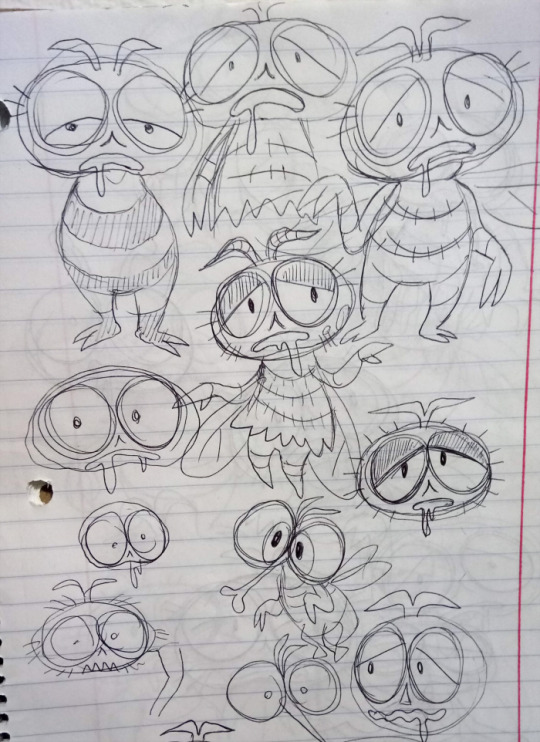
I’ve only ever sketched a tiny number of these (like my fly ideas here), but I can see most of them in my head pretty clearly and might sketch more of them by request someday.
I originally set my fan-region in Florida, a place I hated living but still had a lot of interesting characteristics. This changed over once I moved to Oregon, and the thing about Oregon is that it has desert, forest, swamp, coastline and frozen mountaintops that are all pretty vast, ancient and in places relatively untouched compared to the rest of North America. This is not only a perfect setting for some really wild pokemon, but makes a believable choice because our Pacific Northwest is pretty popular in Japan.
The different biomes of this region have "deep" areas where the pokemon change. Some also have "polluted" areas. The region is environmentally themed and heavily deals with human interference on the natural world.
The villains are Team Bio, genetic engineerers lead by a mysterious old woman who narrowly survived the original Mewtwo experiment. Her underlings all use "mutant" pokemon, and she seeks to create a new species of hyper-intelligent, pure-hearted pokemon that will replace humans entirely.
Along the way is a strange increase in reports of interstellar pokemon activity...
I actually tried hard to minimize how many pokemon in this are just “my kind” of concept, but I think I failed pretty hard. It probably does feel like it leans a little more towards Mortasheen than something Pokemon would actually make, but for basically every pokemon that’s one of my “dream concepts” or “most wanted” I tried to come up with one that I thought would appeal more to somebody else’s taste than mine.
THE STARTERS
Grass Starter: a grass "lumberjack" pterosaur with an axe for a beak. Second stage has more saw-like beak, final stage is a grass/steel quetzalcoatlus (the pterosaur) with a beak and crest forming a chainsaw, no longer flies
Fire type calf whose black cow marks are actually soot. Evolves into cow with craggy black “helmet” and horns of charcoal. Final stage a charcoal-armored minotaur like fire/ground type.
Water Starter is a beady-eyed water shrew with big webbed flipper feet, known to steal shiny objects. Second stage more humanoid, said to dive for treasure. Final stage is water/dark lanky, stripey shrew with a black mask, said to rob boats like a “highwayman” of the river.
Meadows and forest:
Normal type mammal is a spherical porcupine, like a chestnut. Rubs its spines with noxious fruit juices, giving it a multicolored look. Evolved form is a colorful “punk” porcupine.
Early bug is a sticklike inchworm
Evolves to cocoon resembling a wooden log on top.
Final form is bipedal stick mimic grasshopper, evocative of a cute wooden puppet with a pointed nose.
Basic bird is a hummingbird
Evolves to be four-winged and legless, never lands in its whole life.
Final hummingbird is a fierce looking hunter that drains energy from grass types like a predator.
Grass type walking bud creature, looks nervous.
Evolves to grass/flying orchid-like angelic flower.
Alternate evolution is wilted, grey, grass/ghost goth orchid with tattered petals, cute but sad.
(evolves this way if it levels up after a battle in which it sustained super-effective damage)
Ground type earthworm sticking out of dirt, cute flower-shaped head.
Evolved worm looks like shark sticking out of the dirt, nose looks like its prevo
Electric/dark pikachu-like packrat holding a large coin. Electrically charges its treasure as a booby trap. Actually said to be employed as underlings by the water-type shrew starter.
MISCELLANY:
Bug/poison type grub with fangs. Only encountered in garbage cans.
Evolves into a fly pupa
Final stage is a gloomy looking, drooling anthropomorphic fly.
Single stage bug/fairy type: a beautiful Maleficent-looking parasitoid wasp. Evolves from any cocoon/pupa pokemon if they're holding a "suspicious egg" item.
Ocean
Water/grass nudibranch with flower on its back.
Evolves to a glaucus, each "arm" a colorful flower that absorbs sunlight as it floats.
Water type fish that "sails" on the sea's surface with its fins.
Sleepy looking stingray evolution.
Final form is water/dragon deep sea fish, combines some traits of anglerfish and viperfish with eyes on stalks. Only evolves from stingray when you're in the sea trench.
Water/flying marlin with huge, dazzling butterfly like fins.
Water type baby dolphin, fuzzy like a seal pup, only evolves if it has fainted more times than the number of its current level. Evolved form is water/dark, shaggy-furred, fierce looking, battle scarred dolphin with legs instead of flippers, a throwback to the doglike ancestors of delphinidae.
Polluted inlet
Water/poison oil slick with two tentacles and beady white eyes, signature ability changes it to water/fire type if it uses a fire move.
Evolved form is an oil slick rising into a cartoon octopus with x's for pupils.
Water/steel fish hook with tiny head and eyes, like a barbed metal worm.
Water/steel fishing jig, googly eyes and everything.
Barren Island - just a very big rock in the middle of the inlet
Ghost/poison: a greenish "dodo bird" with a face like a biohazard mask, the ghost of a species that went exinct due to sickness.
Sea Trench
Water/fire bristleworm "snake"
Water/fire tube worm "dragon"
Water/ghost wailord skeleton draped in pink fuzz and a garden of one-eyed bone worms.
Swamp
Electric/flying bird resembling a lightbulb kiwi.
Evolved form resembling a neon light lawn flamingo.
Grass/fairy giant sloth with sleepy face, completely covered in shaggy moss with various flowers and mushrooms. Protector of the swamp, able to control plant life.
Grass/psychic sundew, just a pair of sundew leaves atop a sleepy looking oddish-esque bulb.
Evolved sundew is mostly a big circular sundew rosette, but a humanoid flower rotates in the center like a music box to lure prey.
Water/fighting borzoi pup with long legs, acts like a water strider.
Evolved form is an elongated, elegant borzoi "ballerina" that dances atop water
Water/ground red leech slightly evocative of a vacuum cleaner. A healer that sucks poison from the body instead of blood. May mysteriously appear in your team after walking through swamp water.
Deep Forest:
Grass/ground banana slug with colorful mold spots, learns spore.
Evolves into mold splotched, brown banana peel creature, more like a big squid.
Grass/dark autumn leaf in the shape of a bat, has levitate.
Evolved form redder, bigger "vampire cape" leaf-bat.
Psychic/ghost cheshire cat with Meowth-like proportions, bright crescent smile.
Evolved form just huge smile and cat eyes hovering in the air, beastly cat body fading into view only for physical attacks or when struck.
Rock type humanoid made of transparent amber with a strange mayfly-like bug sleeping inside. Outer body can "break" at low HP and release faster, more offensive pure bug form.
Rock: incredibly huge, stony looking moose with long white fur draped over its eyes and back. Comes in size variations like Pumpkaboo line and said to never stop growing. A truly titanic one is used as transportation through the deep forest.
Snowy patches
Bug/ice velvet worm that spews a freezing liquid. Silly looking, almost like wiggler from mario.
Ice/flying fluffy white bird resembling a tiny Japanese style snowman.
Evolves to resemble western style snowman with clawed bird feet, pointed beak nose. A flightless pure ice mountain dweller.
Electric/ice with levitate: a crystalline "UFO" sky-jellyfish with many colorful lights, core body looks like a cute pikmin-esque "alien" inside. Catch by fishing off of ledges into the sky. Mistaken by locals for alien activity.
Lava Tube Caves
Psychic type bipedal pink salamander with no eyes.
Evolves into beautiful milotic-like psychic/dragon blind olm.
Rock/fighting spearhead with feet, eyes are just round holes through blade.
Evolves to gain a stick-figure sort of body.
Abandoned town
Normal/bug filthy dog, a shaggy pile of fur with goofy eyes and pink tongue. Little black specks jump about it. Ability changes normal moves to bug moves.
Evolved form more obviously a dog but still very shaggy, surrounded by constant cloud of black specks.
Grass/electric "christmas tree" made of holly and lights. Found in a burned down house, glowing eyes peer out from beneath it.
Ghost: has a colorful quilt for a body and a pincushion for a head. Found inside houses.
Garbage dump - accessible through abandoned town, possibly what drove people away
(includes piles of toys you may investigate to encounter a banette, mimikyu or klefki)
Water/poison: cartoony fish with blank eyes and humanoid pair of legs. Fish for in toxic green garbage pools. Evolves into ground/poison skeleton fish with four limbs, walking like a lizard.
Steel/bug rusty orange silverfish. Eats junk metal.
Evolved form so big it wears a rusty car for protection with just its legs and feelers sticking out.
MICROPOKEMON - enlarged artificially in a laboratory where you can also take your fossils.
Bug/fighting flea - spiny black flea with big jagged white teeth. Create from the "pest sample" an item carried randomly by the normal/bug dog.
Poison/fairy germ - fuzzy multicolored mold ball with eyes, stalked suckers. Retrieve "germ sample" from the dodo ghost.
Water/fairy tardigrade - transparent, cute bug stylized almost like a "gummy bear." Retrieve "dew sample" from moss sloth.
Pseudolegendary:
Rock type baby gargoyle creature.
Evolves to winged gargoyle with levitate and a few mossy patches.
Final form is an elegant griffon-like rock/dragon with an elaborately carved surface
SPACE ARK DRAGON
This location is itself a dragon/fairy legendary pokemon so massive you can enter its body. It exists to collect and preserve species from dying worlds. Most common wild pokemon inside is duosion and sometimes Reuniclus. You can also collect "gene samples" from crystalline pods to replicate the ultrabeasts in the same lab you enlarge the microbes and resurrect fossils.
Bug/dark parasitic alien, a little like weird yellow plant suckered to the ground, red flower-like head with an eye on each petal ala the yokai parasite, gyochu.
Bug/dark parasitic alien, a colorful worm with cute eyes and beautiful mothlike wings, a little like the yokai parasite koshi-no-mushi.
Bug/dark parasitic alien, a pale, red and white striped "lizard" with six spindly limbs and a tubular proboscis, inspired by the yokai parasite kagemushi.
Fairy type alien medic, looks like a cute flatwoods monster with heart motif and nurse coat. Flees from all battles unless you have defeated at least one of each of the parasites.
LEGENDARIES:
Dragon/electric: the ark dragon's smaller offspring, looks like an electronic space whale.
Dragon/steel, menacing, sleek black starship creature. Rival to the ark dragon, a "world reaper" that attempts to destroy planets that it thinks are already dying.
Psychic/fairy little white, fluffy mothman-like being, an observer that casts judgment on suffering worlds to call one of the dragons (version based)
Normal type legendary is the most human-like pokemon we've ever seen, a serene floating figure with long hair and black, almond-shaped eyes. A genetic experiment to supplant humans.
Electric/fighting: a hulking humanoid beast, almost frankensteinian with asymmetrical features, a failed early experiment.
A "glitched and scrambled" two dimensional pokemon. The result of the earliest known experiments in digital pokemon transfer. Actually literally typeless.
POISON FUSIONS created in the garbage dump:
Weezodor - poison/flying - Garbodor/weezing hybrid, like a jellyfish bag with smog tentacles.
Mukking - poison/water - Weezing/muk hybrid, like a koffing with slime appendages.
Garmuk - poison/ground - Muk/garbodor hybrid, like a giant slug made of trash.
MUTANT POKEMON: mutations of classic first-stage pokemon into creatures slightly tougher than even their original final stages.
Mutant Caterpie - bug/dragon - huge, dragonlike Caterpie with more menacing eyespots, clawed limbs.
Mutant Paras - pure grass - giant paras with far more mushrooms of different colors, body pure white with no mouth and white sphere eyes, actually made only of fungus.
Mutant Venonat - bug/dark - same old venonat with a big shaggy monster body
Mutant Zubat - Psychic - somewhat larger than crobat, has actual legs and a pair of clawed arms instead of wings. Much bigger ears.
Mutant Voltorb - electric/steel - a Voltorb even bigger than Electrode, otherwise looks normal besides angrier yellow eyes...until it splits open to reveal sharp teeth.
Mutant Tangela - grass/fairy - more like its scrapped Gen II evolution but perhaps a lot taller, with two very very long arms.
Mutant Geodude - rock/fighting - HUGE spiky arms and hands but head/body are the same as always.
Mutant Shellder - water/steel - it's the spiraly slowbro one!
Mutant Exeggcute - psychic/poison - bigger and more plentiful but "rotten" looking eggs with gloomier eyes and dark purple goo.
Mutant Eevee - normal - bigger than any of the eeveelutions, shaggy and beastly with the "camouflage" ability. Learns strong attacks of every eevee evolution type.
Mutant Doduo - fighting type with only one head
Mutant Luvdisc - the only one based on a non-evolving pokemon. Angry "broken heart" Luvdisc with record offensive stats for the series, but even worse defenses than regular luvdisc.
Mutant Trapinch - dragon/bug - giant turtle-like Trapinch, redder, spiny, second mouth inside jaws.
Mutant Dratini - dragon/fairy - huge long dratini with longer feathery wing ears, identical wings down body.
Mutant Larvitar - dragon/dark - big, armored green reptile, still has larvitar type head with craggier, meaner horn.
Mutant Bagon - dragon - huge, more t-rex proportioned bagon, spiked shell on head.
Mutant Deino - bigger and shaggier with a ring of five long-necked deino heads
Mutant Gible - dragon/fighting - only usually seen as a huge sharky fin sticking out of the ground. When it emerges, its body isn't much bigger than regular gible.
Mutant Goomy - psychic/dragon - giant goomy with gaping mouth, antennae are much longer, green and stripey.
Mutant Jangmo-o - dragon/steel - same old head but more ankylosaur-like big body, entirely a dark iron color with more pitted looking scales.
ENVIRONMENTAL VARIATIONS
no mechanical or typing difference, but new color schemes and decorations on existing pokemon, totally an aesthetic change. Have their own shiny forms.
SEA TRENCH FORMS:
Entirely pale pink golisopod line with closed eyes
transparent red tentacool line with darker red nodules
dark maroon inkay line with blue lights
red and purple feebas line
CAVE FORMS:
White, eyeless venipede line
White, eyeless magikarp line
DEEP SWAMP FORMS:
crocodile-green Sandile line with lily pad on head
black shelled "freshwater" shellder line with green algae growths
pure red and purple colored bellsprout line
DEEP FOREST FORMS:
braviary with more hawklike colors
foongus line with no pokeball pattern...the original foongus?
wolf-spider colored joltik line
POLLUTED INLET FORMS:
Dewpider line with all black body and limbs, yellow glowing eyes in dirty green water
Grey wailmer line draped in red algae, clumps of barnacles (presumably degenerated binacle)
Wingull line with grey and black oil-splotched feathers, tin can on head
GARBAGE DUMP FORMS:
Bounsweet line with only grey, brown and black colors, dark spoiled looking splotches
Black bag trubbish line with green trash, copper colored pipes
Rusted looking klink line, rotates only once every few seconds.
----------GYM LEADERS --------------
In this region the gyms are dual type, and bring back past mechanics and gimmicks as their focus.
flying/normal: a blind, wheelchair-bound old man who specializes in dog and bird pokemon. Uses a baton pass team.
Steel/electric: an astronaut commanding his gym by remote feed from the station. Uses Magnezone, Rotom forms and, surprisingly, a random steel or electric ultrabeast.
Poison/bug: a germophobic lady scientist ironically obsessed with pollution pokemon, always wearing a biohazard suit. Has weezing, garbodor, the fly pokemon and Yanmega. Uses Z-moves, but it's random whether she uses a bug or poison one and on which pokemon.
Dark/fire: an elderly biker lady. Has no gym and in fact roams around the region. Surprisingly challenges you to a third-gen style beauty contest with her frightening selection of pokemon.
Grass/fairy: witchy pharmacist and botanist who lives out in the woods, all of her grass types are mushroom based. Unusually has you team up with her in a double battle against a random pokemon of unusual size and strength, like Alola's totem pokemon.
Ground/fighting: an extremely frail little nerdy guy who likes amazingly fearsome pokemon, hates bullies but kind of is one. Makes you face a horde battle with all of his pokemon vs. only one of yours at a time.
Dragon/rock: a boisterous monster movie director who dresses his pokemon in costumes, gym is a cardboard city. Uses a dynamaxed pokemon.
Ghost/psychic: a horror author, Vincent Price like, lives in a mansion and makes visitors face scenes from his books. Instead of a single battle, he has you face a series of singular mega pokemon behind each "scene."
THE LABORATORY
This location is of course secretly associated with the villain team, but you can free it up from them in the endgame. Here you can make fossil pokemon, micropokemon, regional forms from past generations, ultrabeasts and even mega stones, but all require you to spend one or more “gene crystals.” You’re handed a number of these through the storyline but it would be very challenging to farm more than that (think Gen 7 bottlecaps).
Spending more crystals at the lab would allow you to finally alter abilities, natures and IV’s at a whim, and for an exceptional cost you could upgrade the BASE stats of any L100 pokemon permanently. This is a percentage increase applied across the board to all of its stats at once, and stops at either 100 total points beyond their normal limits, or a final base stat total of 530 (equivalent to a fully evolved starter)
MISC STUFF:
Your mom this gen asks you if you hope to have an easy, challenging, or very challenging adventure. You can return to her at any time to adjust the difficulty again.
When you beat the game, you can make a custom trainer for online battles using the models of other NPC trainer types, i.e. you can finally be a swimmer/scientist/grunt/etc. You can unlock some popular ones from past generations.
You can select one pokemon as your main partner, which not only has it following you, but involves it a little more in the storyline (special events based on its first typing) and gives it some in-game perks.
A special item attached to any one of your pokemon allows your whole team to “share strength,” meaning that their weaknesses are mitigated for each teammate they share a type with. This allows for type-themed teams to be more viable but wouldn’t completely eliminate their weaknesses, and the effect diminishes proportionately for every pokemon that faints.
You can designate a seventh pokemon to be your “team mascot,” a non-combat role with different effects depending on species/type.
A single team can have either the mascot, a z-move, a dynamax/gigantamax form or a mega, cannot mix these.
Legendary pokemon now suffer a stat nerf for every other legendary pokemon on the same team. A team of six legendaries would actually be somewhat below-average in stats.
631 notes
·
View notes
Photo

This extinct animal of the week is the Thylacosmilus! This guy was in South America in the Neogene period, just before the Pleistocene (Ice Age) era. Despite its cat-like appearance, this animal is known as the “marsupial saber-tooth.” This is only half right, since the thylacosmilus is actually not a Marsupial, but is in a taxa that is considered the sister of Marsupials, so it’s close enough and is likely nicknamed that due to the familiarity with marsupials.
During this time, South America actually had many marsupials, so what happened and why are the majority in Australia now? Marsupials originated and were actually plentiful in the land we know as North America. They traveled to South America. Then the marsupials in North America died out. With South America providing new niches, marsupials boomed. But when North America and South America rejoined, the marsupials travelled back to North America, not that successfully though. We can see some relatives like the North American opossum. There are several theories why we don’t see many in North America, but the general theory is that it is too cold for marsupials to diversify there now. South America, Australia, and Antarctica were once connected and it seems like when marsupials reached South America, they travelled further to Australia. Then Australia broke off. There’s a giant gap in the fossil record for Australian marsupials, so it’s unclear why they did well there.
Back to the Thylacosmilus, this guy was about the size of a modern jaguar. The saber teeth are actual an excellent example of convergent evolution. There are two big groups in mammals, the Metatherian (marsupials) and Eutharian (placental) animals. The saber-tooth tiger is a Eutharian mammal and does not share a close lineage to the thylacosmilus. If you remember from my Smilidon #xatw I mentioned how strongly saber-teeth were selected for in the environment. However, the thylacosmilus did not use these teeth for predation. These teeth were actually more triangluar while typical saber teeth were blade-like. The thylacosmilus does not have molars for cutting flesh, but rather for crushing bone. This is puzzling though because it lacks incisors and the wear of the teeth suggest a really soft diet. Some scientists believe the saber teeth were used for cutting the carcass open and eating the insides. The anatomy also suggests they did not pounce on prey, and had a stiff back (oops). This suggests maybe the thylacosmilus was a scavenger? But we have no modern examples of a mammal who has survived purely on scavengering. Maybe we’ll find out one day!
Get the sticker here!
Sources:
Science Laboratory. (2020, June 03). Thylacosmilus Was Not A Saber-Tooth Predator. [Video]. Youtube https://www.youtube.com/watch?v=1wkbzlKn1z8
Geggel, L. (2019, March 03). Why Are There So Many Marsupials In Australia? Live Science. https://www.livescience.com/64897-why-marsupials-in-australia.html
Janis, M.C., Figueirido, B., DeSantis, L. & Lautenschalger, S. (2020, June 26). An eye for a tooth: Thylacsmilus was not a marsupial “saber-tooth predator”. PeerJ. doi: 10.7717/peerj.9346
Natural History Collections. (n.d.). Origin and Evolution of Marsupials. http://www.nhc.ed.ac.uk/index.php?page=493.168.256
#xatw#my art#art#artwork#artist#artists#artists on tumblr#artists of tumblr#digital artist#digital art#digital artists#paleoart#paleoartists#paleoartist#thylacosmilus#extinct animal of the week#extinct animals#extinction#extinct species
4 notes
·
View notes